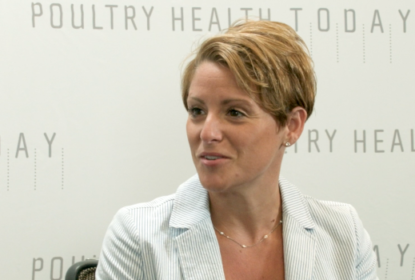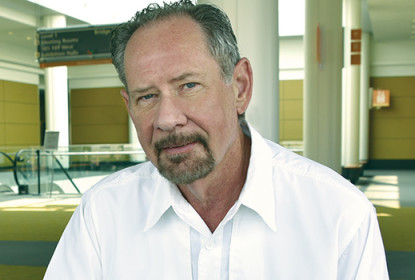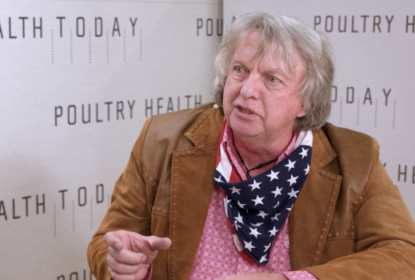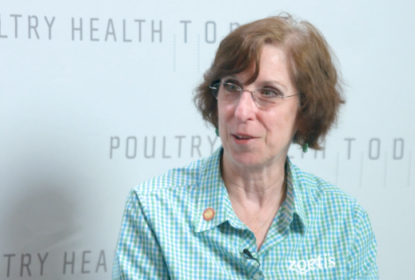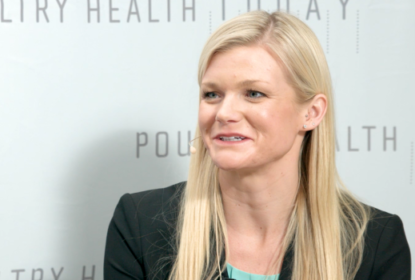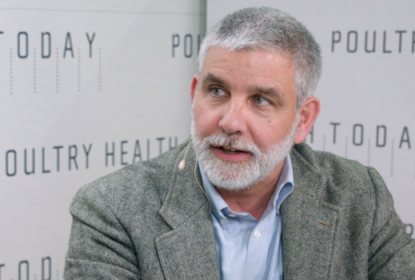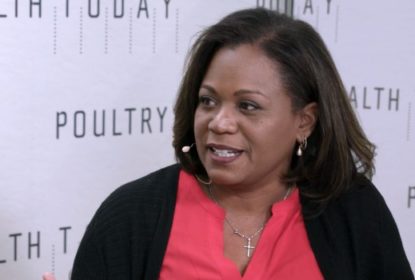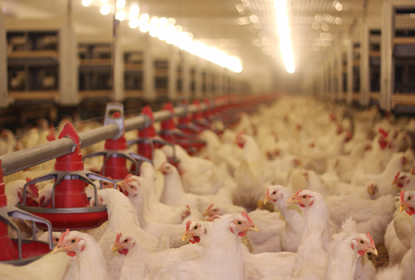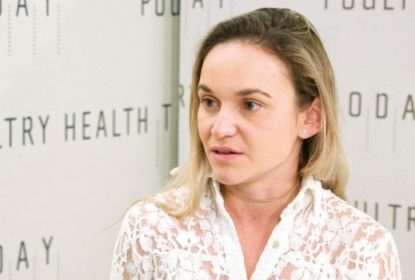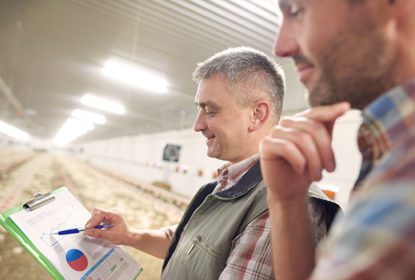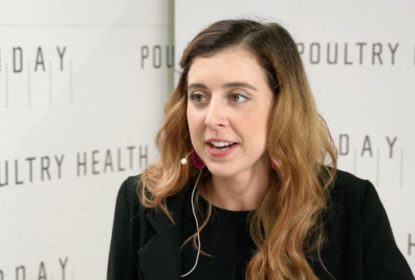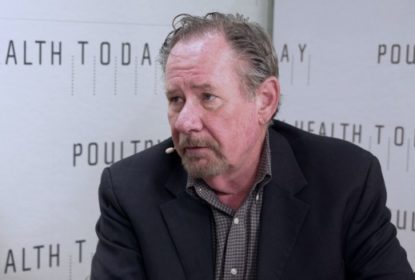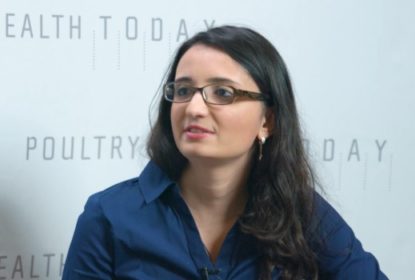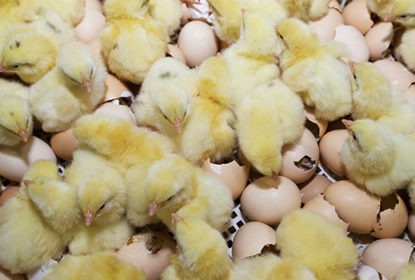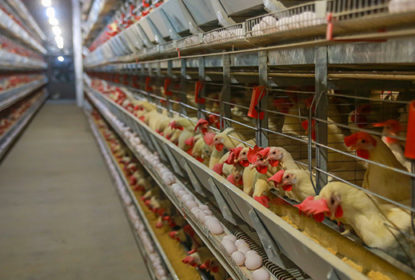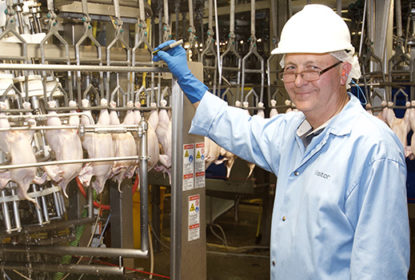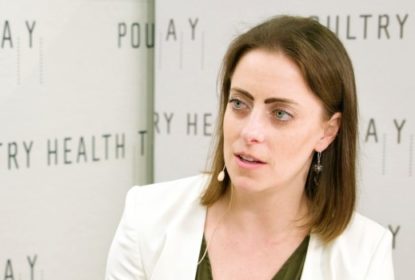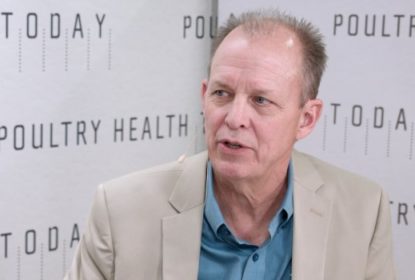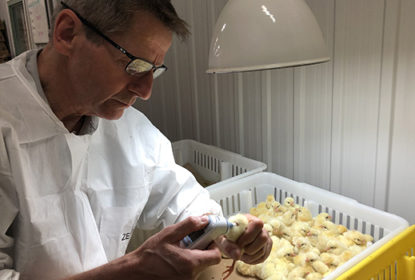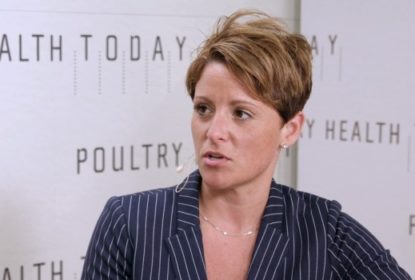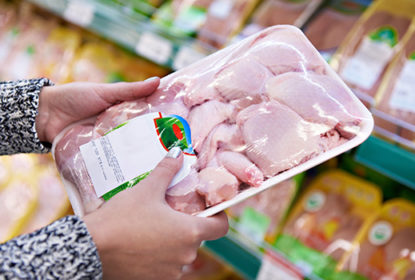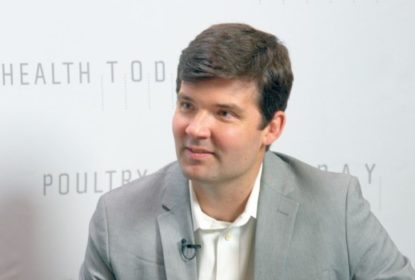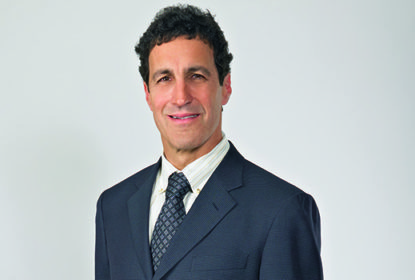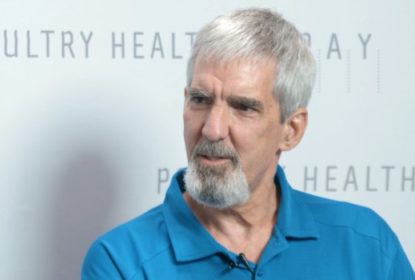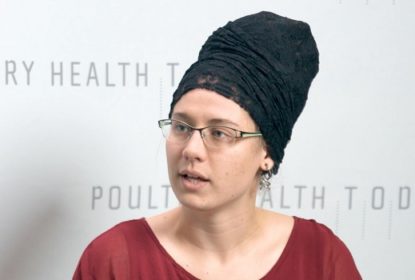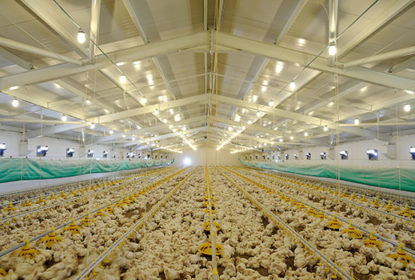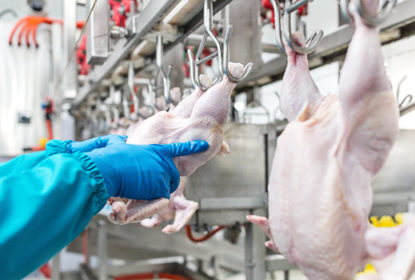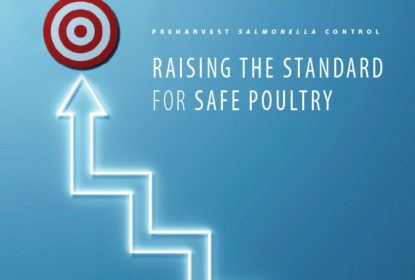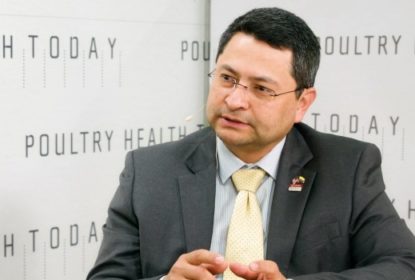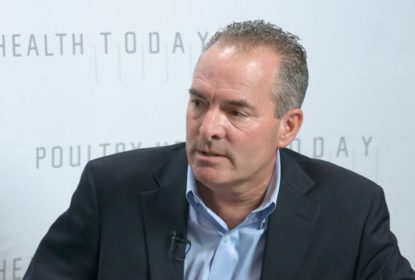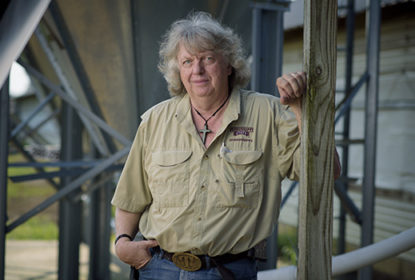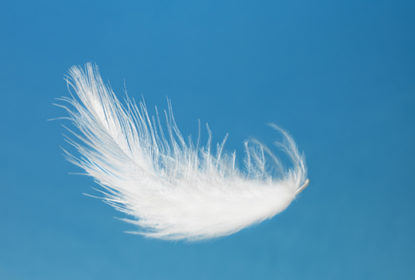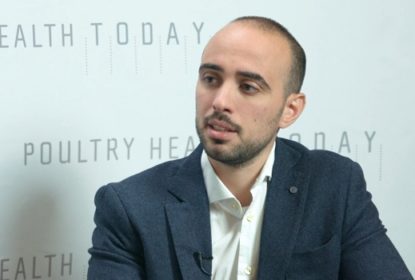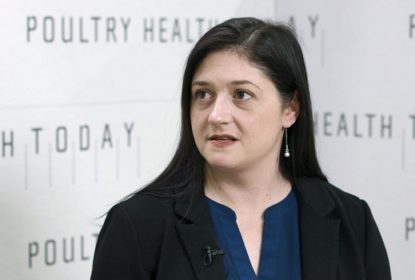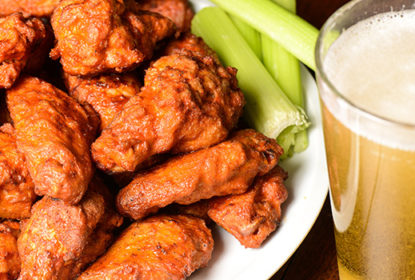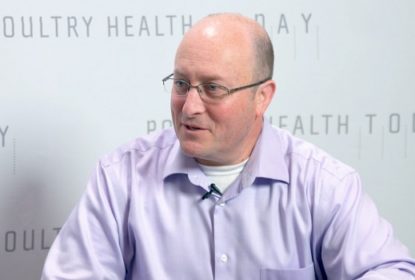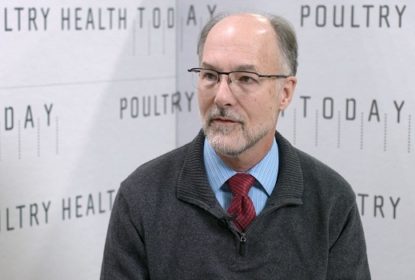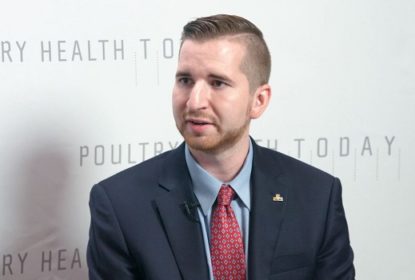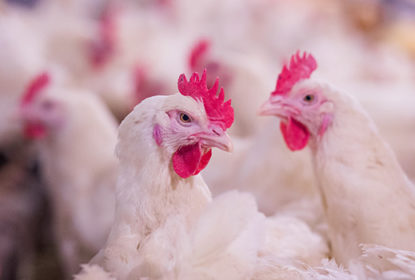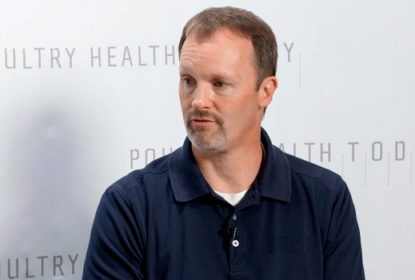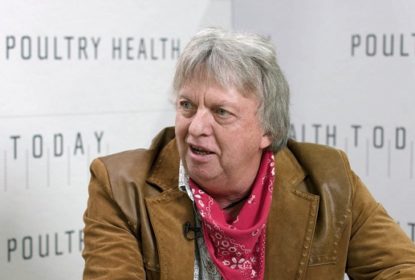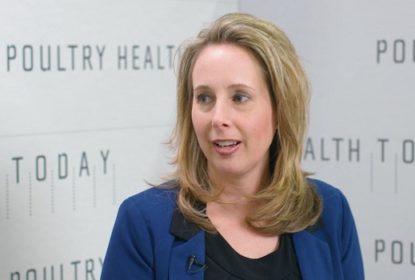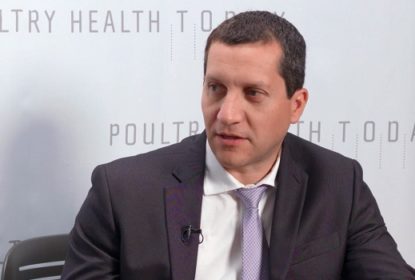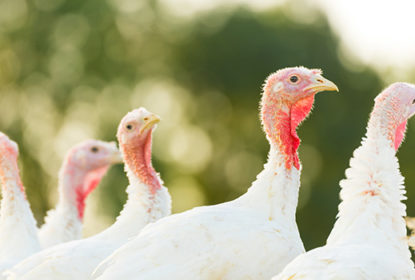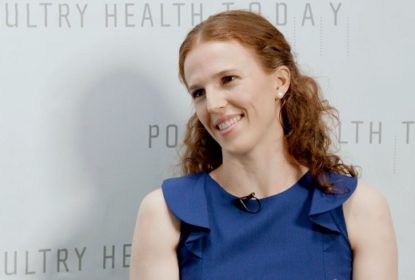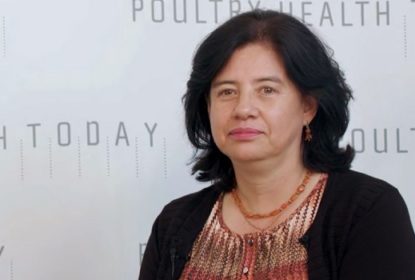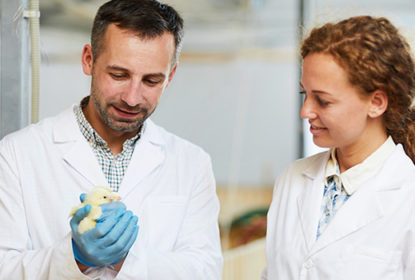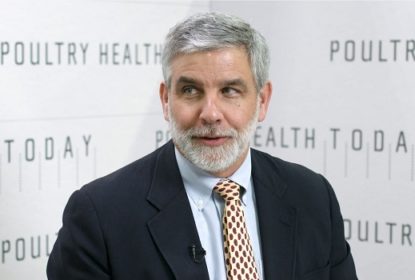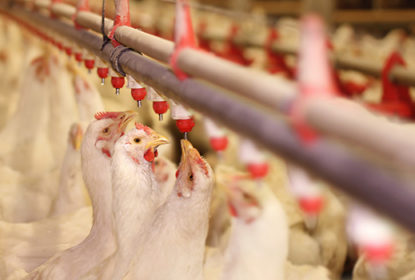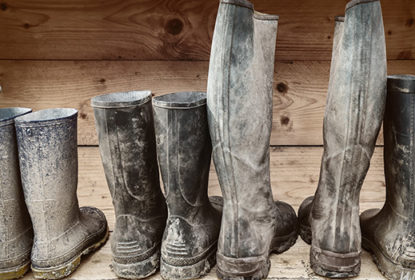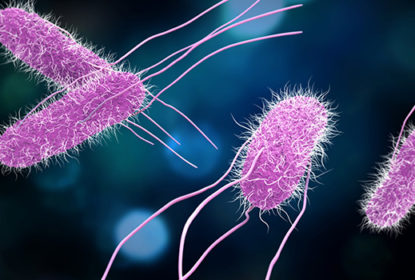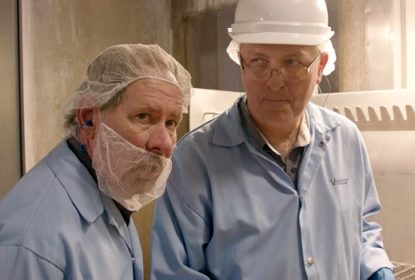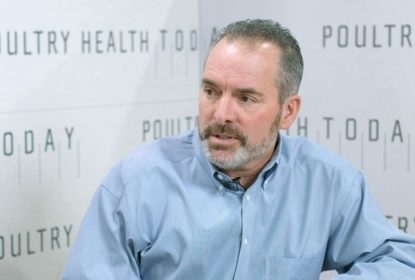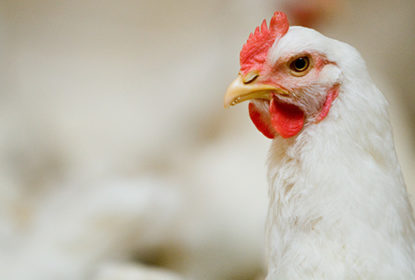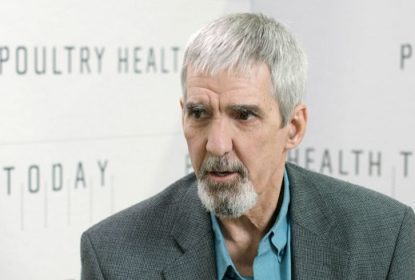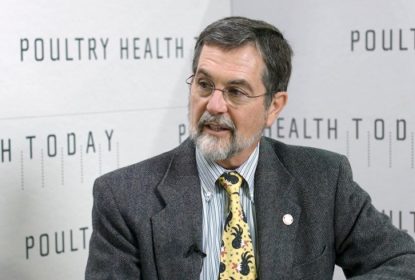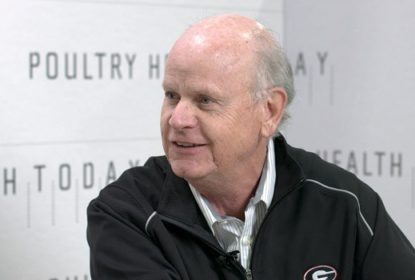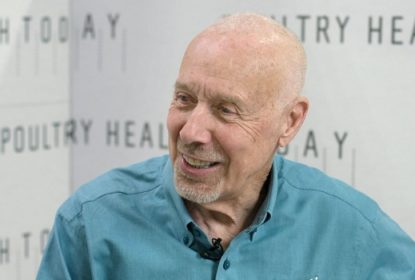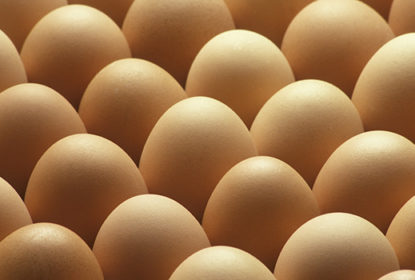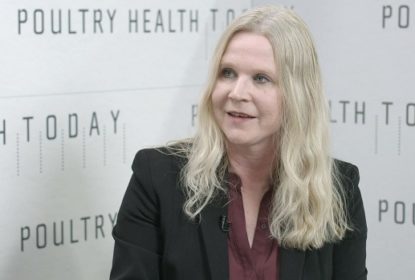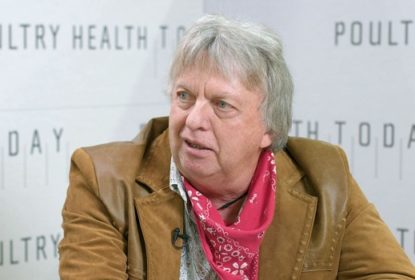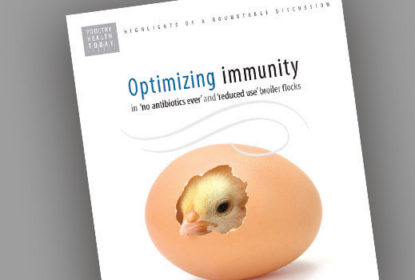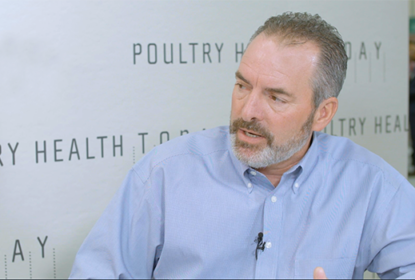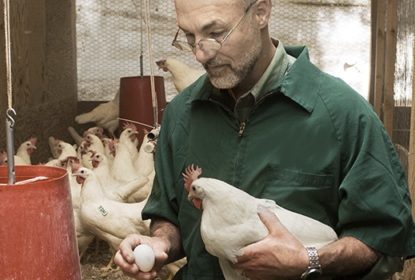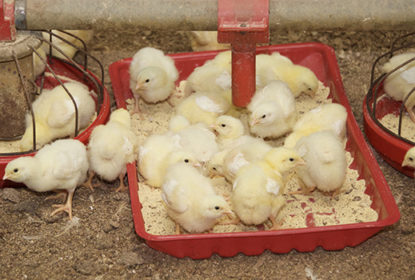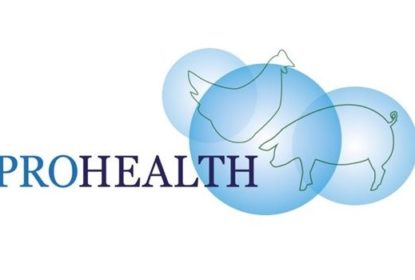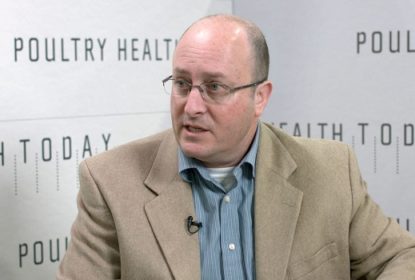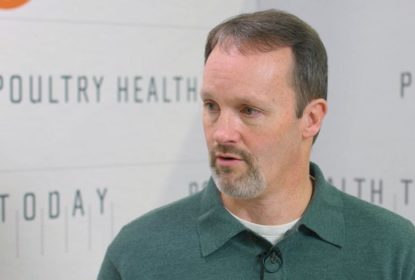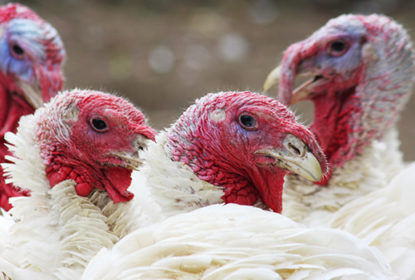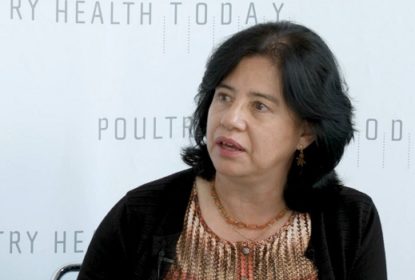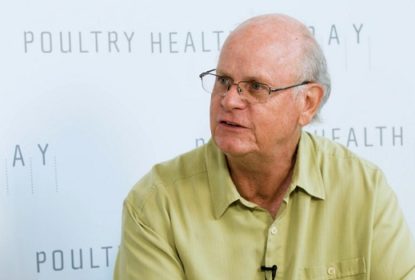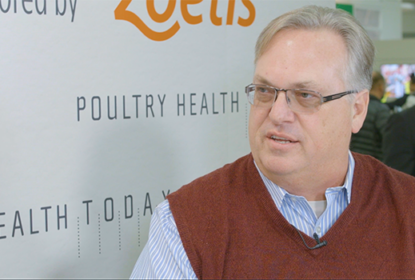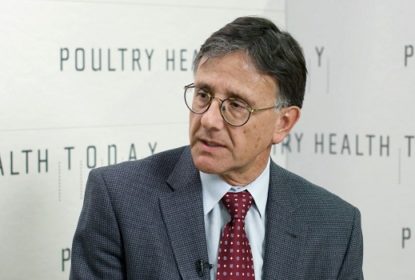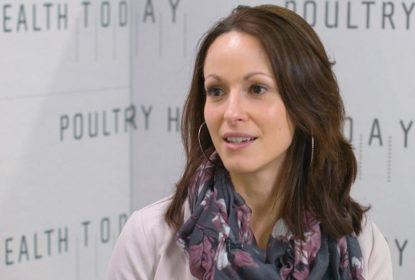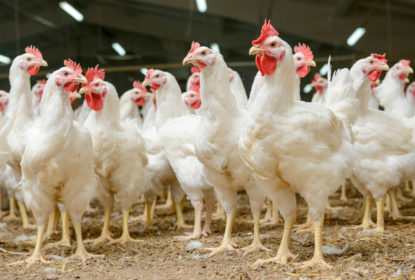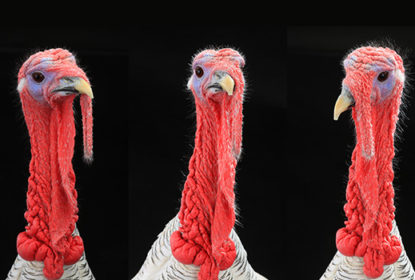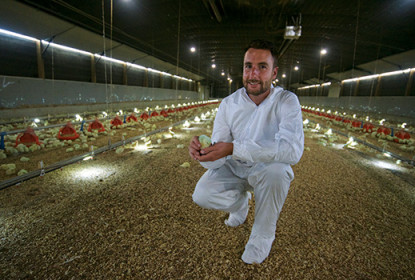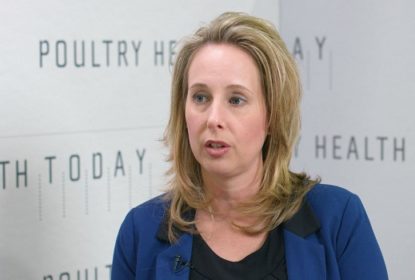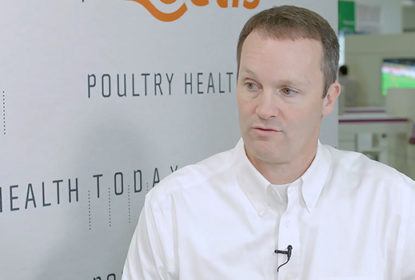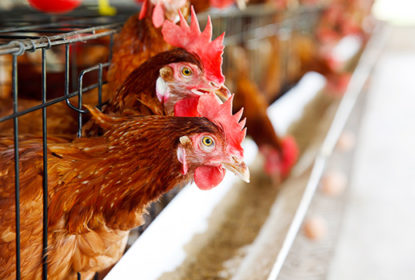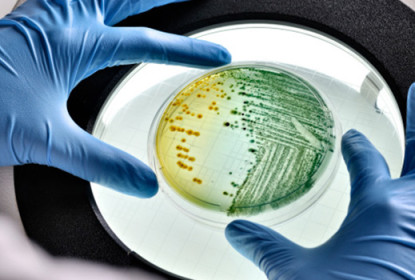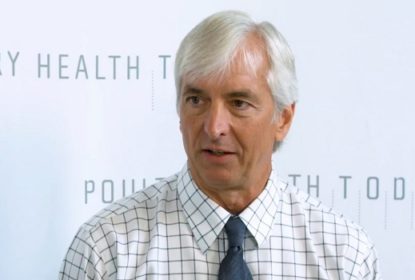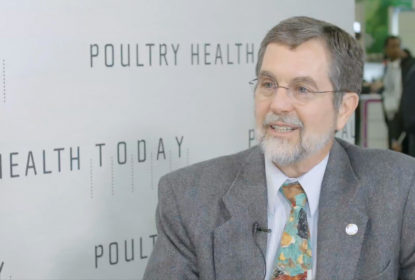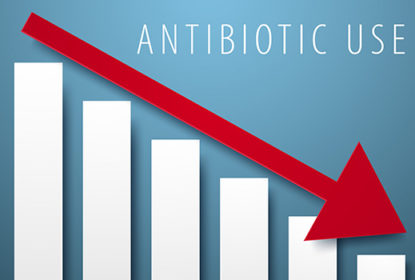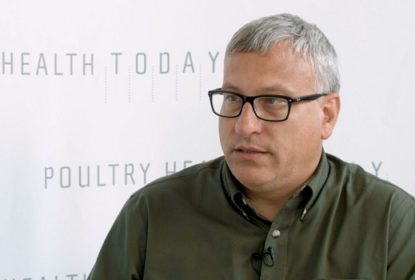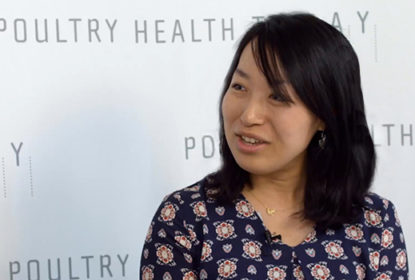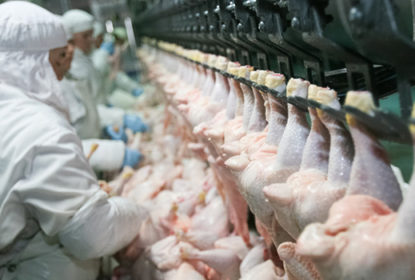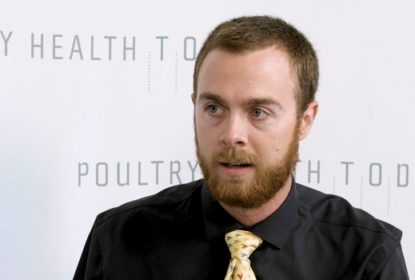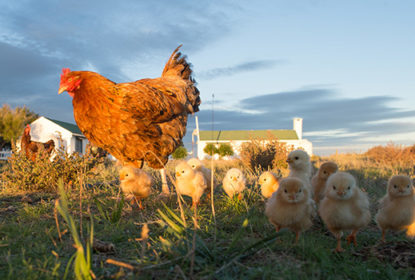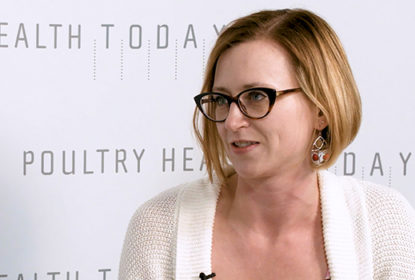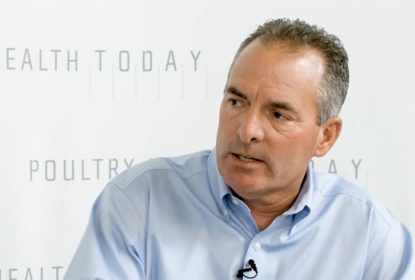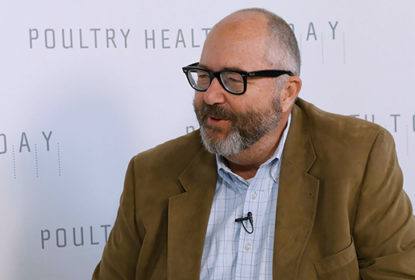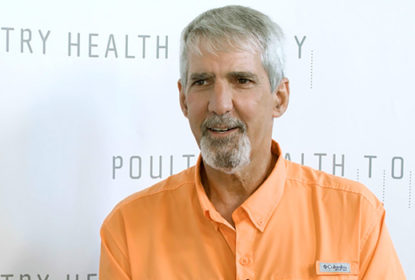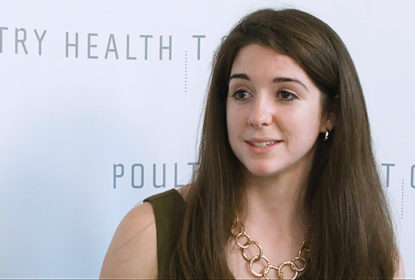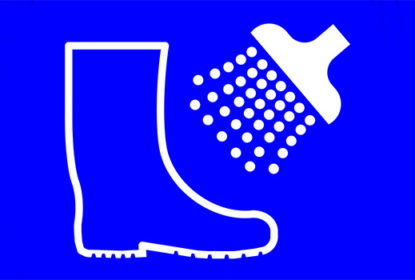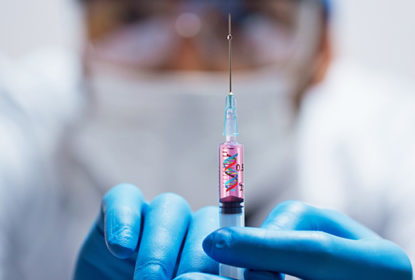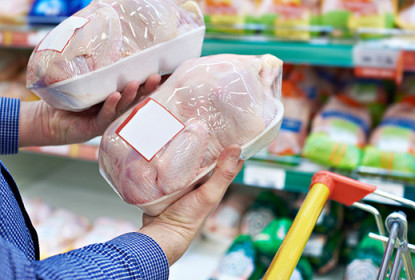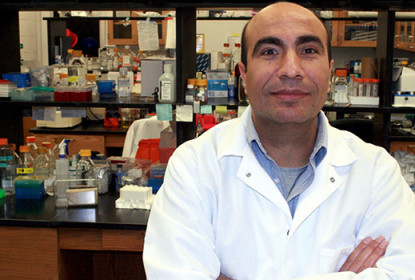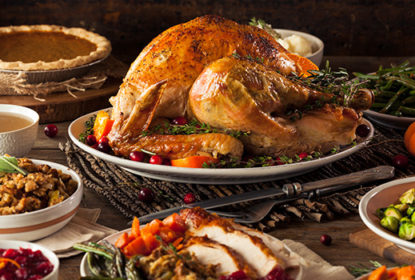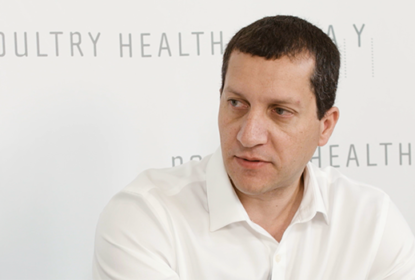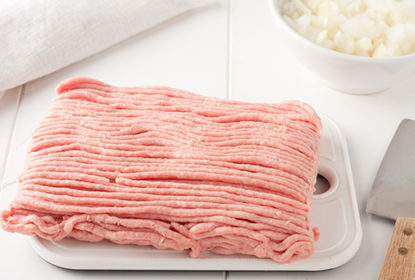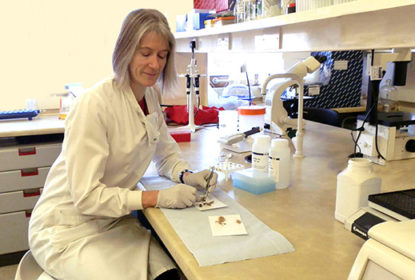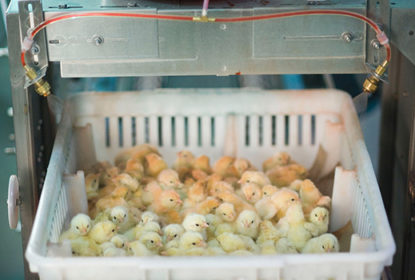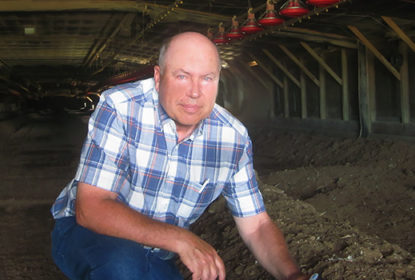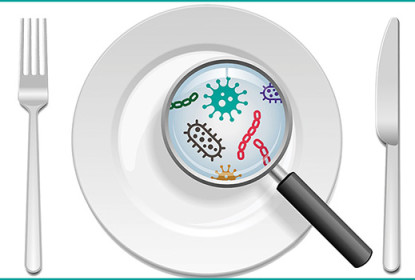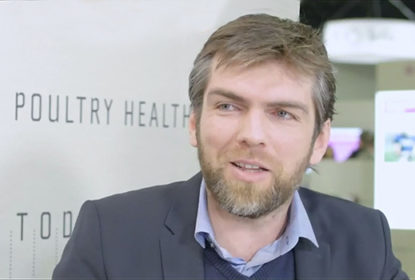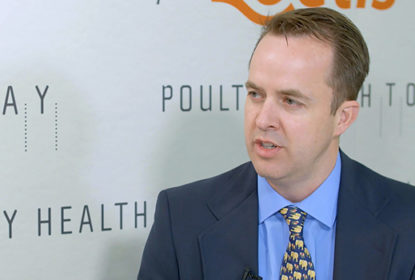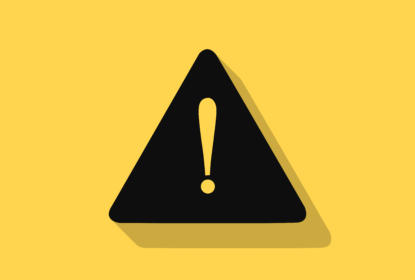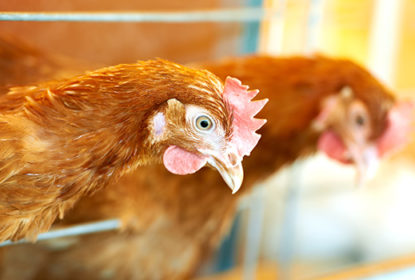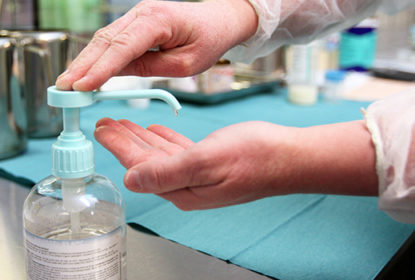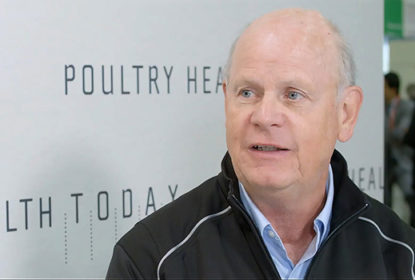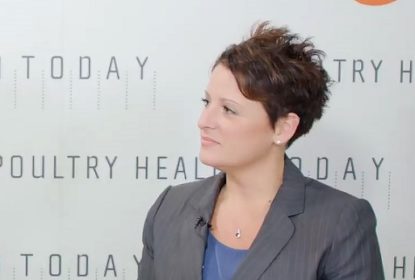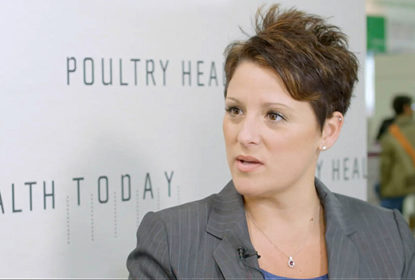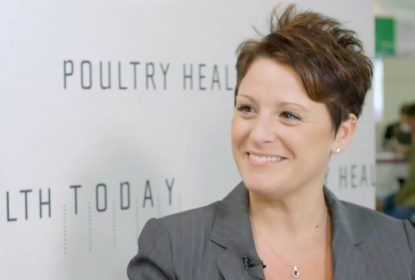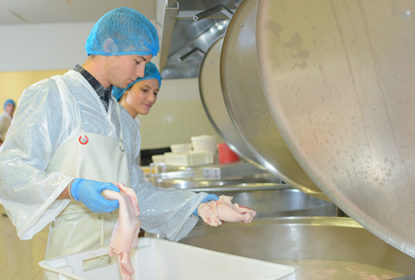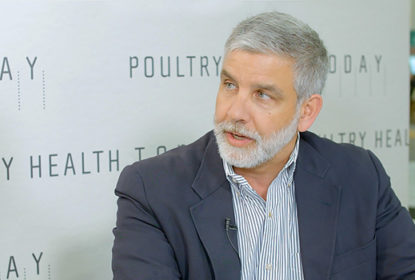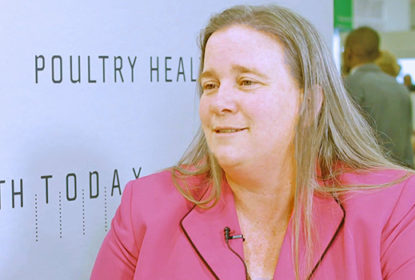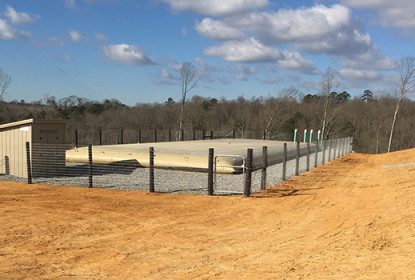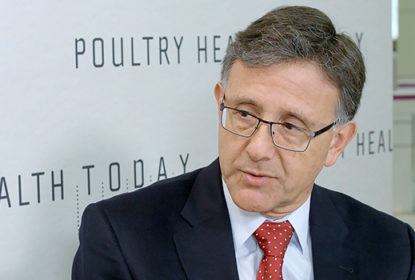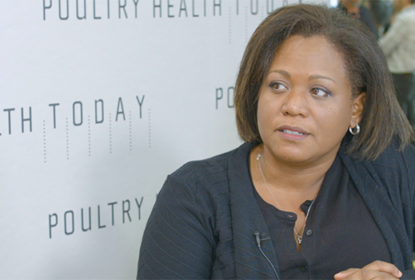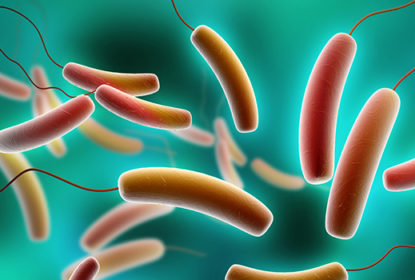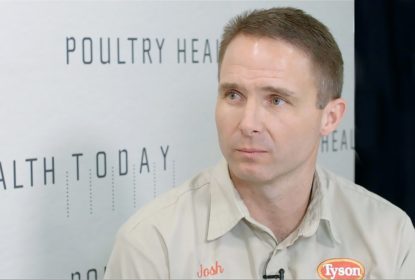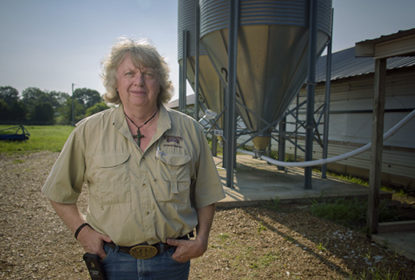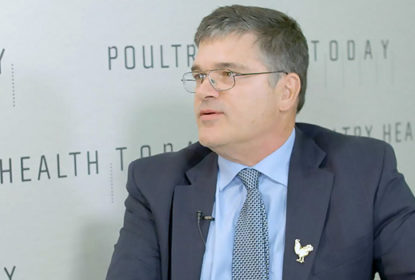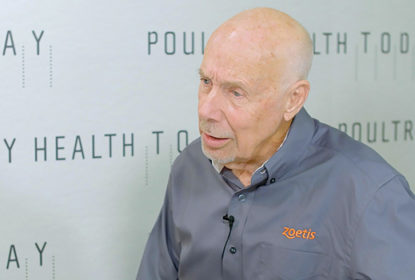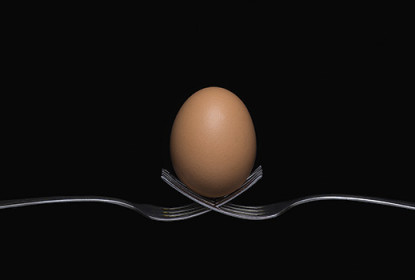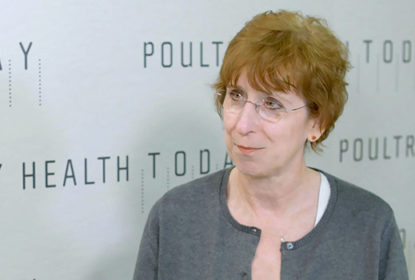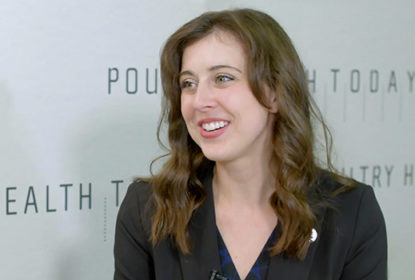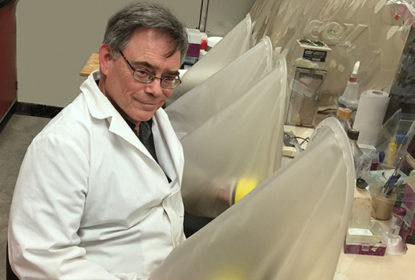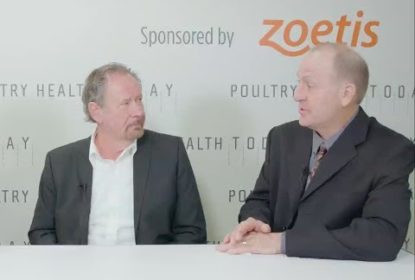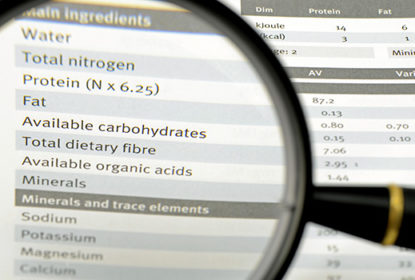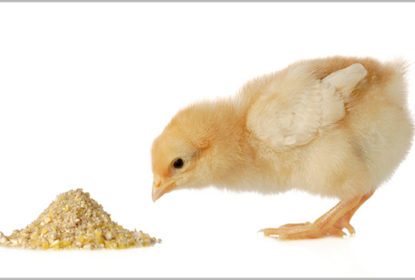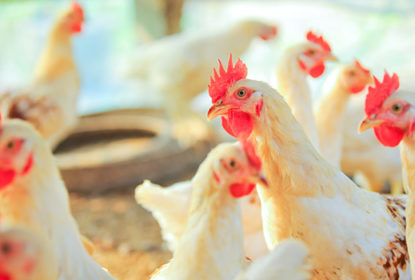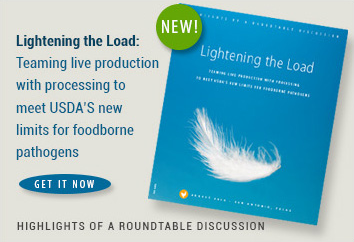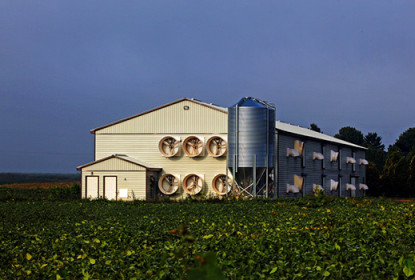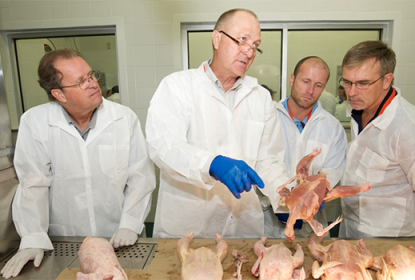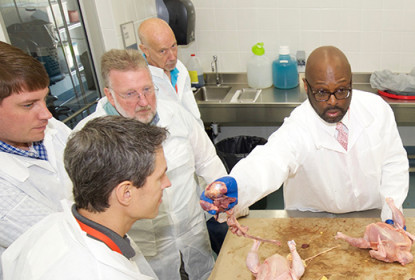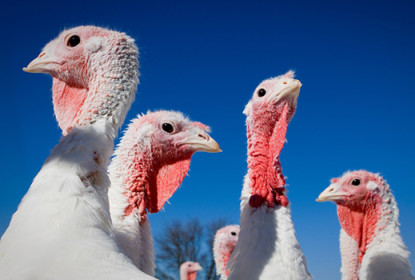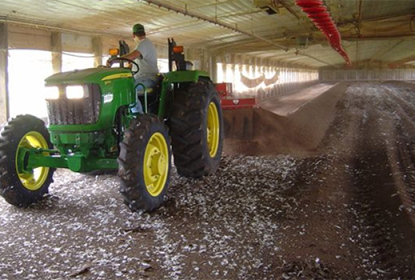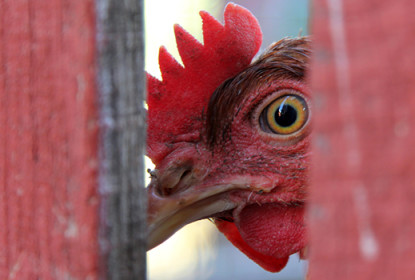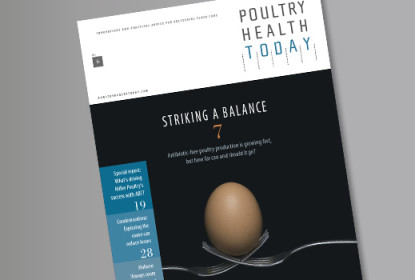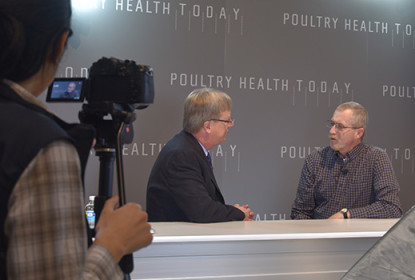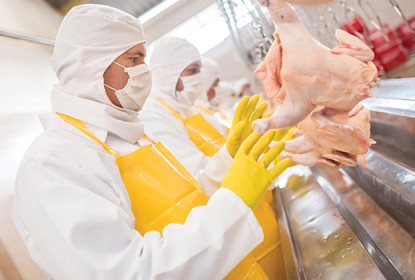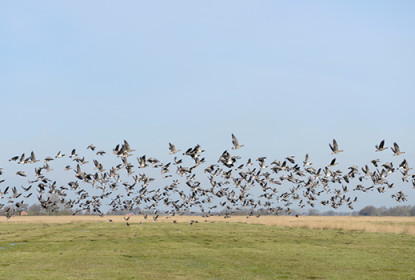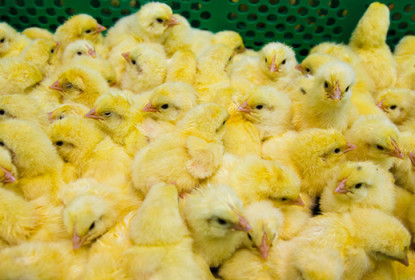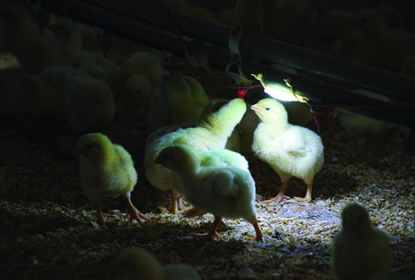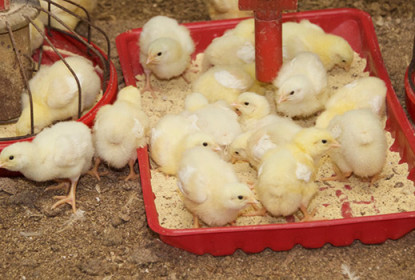Author Archive: Jennifer Grullon

Flock welfare, Global TOPICS, Interviews, News, PHT GLOBAL, PHT US, Podcast, Sustainability, TOPICS, Videos
... Better air circulation, moderately lower humidity improve paw quality
Sep 23, 2019Jennifer GrullonComments Off on Better air circulation, moderately lower humidity improve paw quality
Increasing air circulation coupled with moderate reductions in humidity can dramatically improve paw quality, Michael Czarick and Connie Mou, University of Georgia, told Poultry Health Today.... US poultry industry shifting focus to Campylobacter, Salmonella Infantis
Sep 19, 2019Jennifer GrullonComments Off on US poultry industry shifting focus to Campylobacter, Salmonella Infantis
The US poultry industry needs to revisit Campylobacter-control strategies in preparation for new performance standards coming from USDA’s Food Safety and Inspection Service, Ashley Peterson,...... Tips for ensuring best field vaccination results with Poulvac® ST or Poulvac® E. coli
Sep 12, 2019Jennifer GrullonComments Off on Tips for ensuring best field vaccination results with Poulvac® ST or Poulvac® E. coli
TOOLBOX, Issue 12: An interview with Lloyd Keck, DVM, ACPV, consulting veterinarian, on ensuring the best field vaccination results against Salmonella and E. coli.... Sprinkler systems benefit animal welfare, reduce water use
Sep 12, 2019Jennifer GrullonComments Off on Sprinkler systems benefit animal welfare, reduce water use
Sprinkler systems used in conjunction with cool cells during hot summer weather can not only benefit animal welfare, they can dramatically reduce water use.... Wet bulb reservoirs can be source of bacterial contamination for hatching eggs
Sep 10, 2019Jennifer GrullonComments Off on Wet bulb reservoirs can be source of bacterial contamination for hatching eggs
Wet-bulb reservoirs in hatchery incubators should be included in the bacterial-monitoring program to ensure they aren’t the source of egg-shell contamination.... Vaccinated birds shown to have lower incidence of Salmonella at processing
Sep 04, 2019Jennifer GrullonComments Off on Vaccinated birds shown to have lower incidence of Salmonella at processing
Broilers vaccinated against Salmonella showed reduced levels of the pathogen at processing in a recent study, according to Charles Hofacre, PhD, president, Southern Poultry Research Group. Inc.... Coccidiosis vaccination impedes nutrient digestibility
Aug 30, 2019Jennifer GrullonComments Off on Coccidiosis vaccination impedes nutrient digestibility
Poultry veterinarians and production managers are all too familiar with coccidiosis and its impact on gut health, nutrient absorption, feed conversion and growth rate.... What makes a chick tick: Help non-farm audiences understand poultry’s needs
Aug 29, 2019Jennifer GrullonComments Off on What makes a chick tick: Help non-farm audiences understand poultry’s needs
Rather than adopt costly production practices that don’t necessarily benefit the health or welfare of poultry, veterinarians should work to educate non-farm audiences about a bird’s inherent...... Poultry litter management key to MS control
Aug 28, 2019Jennifer GrullonComments Off on Poultry litter management key to MS control
Litter topped the list of environmental factors most consistently positive for Mycoplasma synoviae (MS), Naola Ferguson, DVM, associate professor at the University of Georgia, told Poultry Health...... Preharvest reduction of Salmonella, Campylobacter key to better control efforts
Aug 27, 2019Jennifer GrullonComments Off on Preharvest reduction of Salmonella, Campylobacter key to better control efforts
By Abhinav Upadhyay, DVM, PhD, postdoctoral associate and Dan J. Donoghue, PhD, professor, University of Arkansas... Preventive measures are only option for combatting key parasites in turkeys
Aug 19, 2019Jennifer GrullonComments Off on Preventive measures are only option for combatting key parasites in turkeys
Turkey producers will need to rely on preventive measures including biosecurity, good gut health and genetic selection to combat three key flagellated protozoan parasites that can affect their...... Zinc can help combat infectious bronchitis in poultry
Aug 14, 2019Jennifer GrullonComments Off on Zinc can help combat infectious bronchitis in poultry
Research on infectious bronchitis virus remains a top priority for the poultry industry. Not only is it widespread, but new serotypes also continue to emerge due to mutations and recombination events...... Water quality: No room for error in NAE flocks
Aug 13, 2019Jennifer GrullonComments Off on Water quality: No room for error in NAE flocks
By Tom Tabler, PhD, Extension Professor, Mississippi State University Extension Service, Poultry Science Department, Mississippi State, Mississippi... Report: US poultry producers slash use of medically important antimicrobials while shifting focus to disease prevention
Aug 08, 2019Jennifer GrullonComments Off on Report: US poultry producers slash use of medically important antimicrobials while shifting focus to disease prevention
US poultry producers dramatically decreased their use of medically important antimicrobials over a 5-year period ending in 2017, according to a new report released by Randall Singer, DVM, PhD,...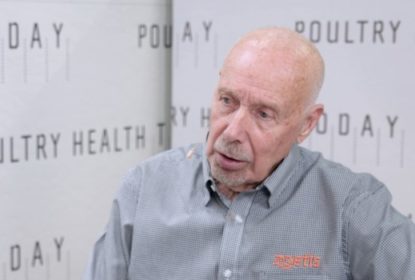
Antibiotic-free, Global TOP NEWS, Hatchery, Interviews, News, PHT GLOBAL, PHT US, Podcast, TOP NEWS, Videos
... Ensuring chick quality in NAE production
Jul 30, 2019Jennifer GrullonComments Off on Ensuring chick quality in NAE production
The increase in 7-day chick mortality that has come along with the elimination of antibiotics requires a focus on containing bacteria that start in the layer house.... Studies in chickens could lead to blackhead control in turkeys
Jul 26, 2019Jennifer GrullonComments Off on Studies in chickens could lead to blackhead control in turkeys
Broiler breeders are an ideal carrier for Histomonas — the cause of blackhead disease — but unlike turkeys that often die from the infection, broiler breeders survive.... Focus on these 4 areas to ensure broiler chick success
Jul 25, 2019Jennifer GrullonComments Off on Focus on these 4 areas to ensure broiler chick success
Faultless management in the first few days of a chick’s life is critical to ensuring birds remain healthy and productive for the rest of the crop.... Live-production management practices that help contain Salmonella
Jul 15, 2019Jennifer GrullonComments Off on Live-production management practices that help contain Salmonella
Avoidance of wet litter and well-timed feed withdrawal are two of several management steps that will help control the load of Salmonella going into the processing plant.... Focal duodenal necrosis in table-egg layers easily overlooked
Jul 15, 2019Jennifer GrullonComments Off on Focal duodenal necrosis in table-egg layers easily overlooked
Focal duodenal necrosis in table-egg layers can be an easily overlooked cause of drops in egg production and egg-case weight loss.... When vaccinating broilers against Salmonella may be worthwhile
Jul 09, 2019Jennifer GrullonComments Off on When vaccinating broilers against Salmonella may be worthwhile
Vaccinating broilers is a big investment and may not be needed on all farms, but it can be a worthwhile move if there are high loads of Salmonella coming into the processing plant.... Trial shows glutamine aids gut health in broilers raised without antibiotics
Jul 05, 2019Jennifer GrullonComments Off on Trial shows glutamine aids gut health in broilers raised without antibiotics
With the increase in no-antibiotic-ever production, glutamine may serve as a helpful nutrient asset, particularly when birds are under stress.... World poultry industry still struggling with necrotic enteritis
Jun 27, 2019Jennifer GrullonComments Off on World poultry industry still struggling with necrotic enteritis
NE remains a formidable challenge in broilers raised without antibiotics, and preventing the disease means steering clear of predisposing factors and implementing a rigid coccidiosis-control plan.... Zoetis Fast Tracking Relaunch of Avian Coryza Vaccine to Aid U.S. Disease Outbreaks
Jun 24, 2019Jennifer GrullonComments Off on Zoetis Fast Tracking Relaunch of Avian Coryza Vaccine to Aid U.S. Disease Outbreaks
Zoetis has reintroduced the vaccine Poulvac® Coryza ABC IC3 to help U.S. poultry producers combat outbreaks of avian coryza, an acute respiratory infection.... Maslow’s Pyramid: Self-actualization for chickens?
Jun 17, 2019Jennifer GrullonComments Off on Maslow’s Pyramid: Self-actualization for chickens?
By Philip A. Stayer, DVM, MS, ACPV, Corporate Veterinarian, Sanderson Farms, Inc.... On the road again? Don’t forget Poultry Health Today podcasts
Jun 14, 2019Jennifer GrullonComments Off on On the road again? Don’t forget Poultry Health Today podcasts
Most of Poultry Health Today’s video interviews with leading health experts and other opinion leaders can be downloaded as podcasts and listened to on mobile devices or through audio systems of...... Integrated plan with live production needed to meet new Salmonella standards
Jun 13, 2019Jennifer GrullonComments Off on Integrated plan with live production needed to meet new Salmonella standards
Poultry companies struggling to meet higher USDA standards for Salmonella need to increase control efforts in live production to help avoid the dreaded Category 3.... Pilgrim’s veterinarian shares experiences with NAE production
Jun 07, 2019Jennifer GrullonComments Off on Pilgrim’s veterinarian shares experiences with NAE production
Preparation, meticulous attention to sanitation and improved communication with hatchery staff and growers are critical for NAE production.... Four areas of hatchery management to help achieve better biosecurity
May 23, 2019Jennifer GrullonComments Off on Four areas of hatchery management to help achieve better biosecurity
Diligent attention to four areas of hatchery management — egg-pack quality, incubation, sanitation and in ovo vaccination — can go a long way.... A few tools to improve brooding, not antibiotic alternatives, are key to NE prevention
May 20, 2019Jennifer GrullonComments Off on A few tools to improve brooding, not antibiotic alternatives, are key to NE prevention
By Reg Smith, Vice President, Operations, Atlantic Poultry, Nova Scotia, Canada, Formerly Chair, British Poultry Council’s Antibiotic Stewardship strategy... Poultry producers facing higher hurdles with USDA food-safety standards
May 16, 2019Jennifer GrullonComments Off on Poultry producers facing higher hurdles with USDA food-safety standards
Poultry producers can expect to jump higher hurdles as USDA continues to raise the bar for food safety.... Moving up: Vaccinating broilers may help poultry companies improve Salmonella ratings
May 13, 2019Jennifer GrullonComments Off on Moving up: Vaccinating broilers may help poultry companies improve Salmonella ratings
Vaccinating broilers against Salmonella could be an effective live-side intervention for obtaining higher ratings in the Salmonella categorizations established by the USDA’s FSIS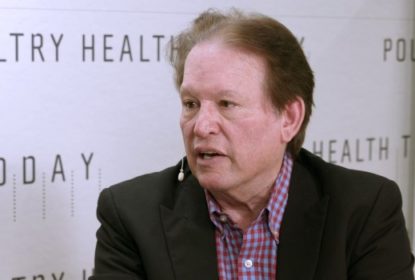
Biosecurity, Global TOP NEWS, Infectious Diseases, Interviews, News, PHT GLOBAL, PHT US, Podcast, Respiratory, TOP NEWS, Videos
... Virulent ND in California sending wake-up call to US poultry industry
May 08, 2019Jennifer GrullonComments Off on Virulent ND in California sending wake-up call to US poultry industry
Outbreaks of virulent Newcastle disease (vND) that have spread from backyard to commercial flocks in California are providing a wake-up call to the entire US poultry industry.... More than half of US broilers raised without antibiotics in 2018
May 06, 2019Jennifer GrullonComments Off on More than half of US broilers raised without antibiotics in 2018
Broilers raised without antibiotics accounted for 51% of total US production in 2018 — an 11-point jump from the previous year and, more significantly, up from 3% in 2014.... Bioshuttle program helps control E. tenella outbreaks in pullets
May 02, 2019Jennifer GrullonComments Off on Bioshuttle program helps control E. tenella outbreaks in pullets
Administration of an in-feed anticoccidial after coccidiosis vaccination has helped alleviate outbreaks of Eimeria tenella in broiler breeder replacement stock.... Avatec®: What’s driving demand in broilers?
May 01, 2019Jennifer GrullonComments Off on Avatec®: What’s driving demand in broilers?
TOOLBOX, Issue 1: An interview with Jon Schaeffer, DVM, PhD, Director of Poultry Veterinary Services, Zoetis... Hatchery hygiene helps limit broiler E. coli mortality risk
Apr 24, 2019Jennifer GrullonComments Off on Hatchery hygiene helps limit broiler E. coli mortality risk
Disinfecting eggs and improving overall hygiene in the hatchery could dramatically reduce the risk of mortality linked to E. coli infections, scientists say.... Aggressive vaccination of broiler breeders needed to keep reovirus in check
Apr 18, 2019Jennifer GrullonComments Off on Aggressive vaccination of broiler breeders needed to keep reovirus in check
Aggressive vaccination of broiler breeders for reovirus using live and inactivated vaccines has been one of the most important steps the US poultry industry has taken to maintain good protection...... Life without antibiotics: Field lessons learned the hard way
Apr 15, 2019Jennifer GrullonComments Off on Life without antibiotics: Field lessons learned the hard way
Producers need to think long and hard before jumping into “no antibiotics ever” (NAE) poultry production.... Dirty chick boxes can be source of Salmonella at hatcheries
Apr 12, 2019Jennifer GrullonComments Off on Dirty chick boxes can be source of Salmonella at hatcheries
Dirty chick boxes at hatcheries can be a source of Salmonella, but the risk was still lower than expected in a study conducted at one US hatchery.... AVMA releases first-ever guidelines for depopulation of animals
Apr 10, 2019Jennifer GrullonComments Off on AVMA releases first-ever guidelines for depopulation of animals
The AVMA has published its first ever Guidelines for the Depopulation of Animals to help veterinarians support animal welfare in situations where the difficult decision to depopulate has been made.... Advanced diagnostic tests helping identify IBV in Europe
Apr 09, 2019Jennifer GrullonComments Off on Advanced diagnostic tests helping identify IBV in Europe
The QX strain of infectious bronchitis virus (IBV) remains the most common variant of IBV in Europe, but the prevalence of the variant 02 strain appears to be on the increase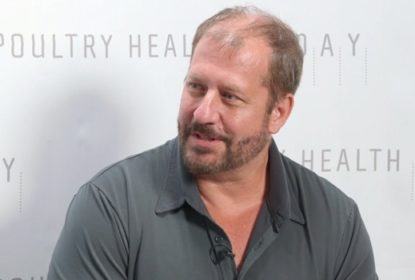
Diagnostics, Flock welfare, Global TOPICS, Interviews, News, PHT GLOBAL, PHT US, Podcast, Respiratory, TOPICS, Videos
... Genomic sequencing could aid ILT control efforts in poultry
Apr 09, 2019Jennifer GrullonComments Off on Genomic sequencing could aid ILT control efforts in poultry
Molecular virology is already leading to discoveries that will improve management of ILT, according to Stephen Spatz, PhD, molecular virologist with USDA’s Southeast Poultry Research Laboratory,...... Navigating the maze of alternative products for necrotic enteritis control
Apr 08, 2019Jennifer GrullonComments Off on Navigating the maze of alternative products for necrotic enteritis control
The effectiveness of antibiotic alternatives is going to vary among “no antibiotics ever” production systems, and it’s up to the producers to figure out which alternatives will work.
Flock welfare, Global TOPICS, Interviews, News, PHT GLOBAL, PHT US, Podcast, Sustainability, TOPICS, Videos
... Urban chicken movement requires legislators to learn chicken basics
Apr 04, 2019Jennifer GrullonComments Off on Urban chicken movement requires legislators to learn chicken basics
Legislators need to know some basics about raising chickens in response to an upsurge in the “urban chicken” trend, Nat Tablante, DVM, told Poultry Health Today.... Effective biosecurity requires addressing the culture of a company
Mar 29, 2019Jennifer GrullonComments Off on Effective biosecurity requires addressing the culture of a company
Effective biosecurity on poultry farms requires developing the kind of culture that motivates everyone in the company to adhere to the procedures that protect flocks from infectious disease.... Novel technologies needed to combat IB in chickens
Mar 27, 2019Jennifer GrullonComments Off on Novel technologies needed to combat IB in chickens
Despite decades of vaccination, the world poultry industry’s ongoing battle with infectious bronchitis (IB) continues to rage and points to the need for novel technologies to combat the disease.... Gizzard changes seen in NAE flocks but diagnosis is murky
Mar 21, 2019Jennifer GrullonComments Off on Gizzard changes seen in NAE flocks but diagnosis is murky
Raising broilers without antibiotics appears to be affecting the gizzard in ways that aren’t yet fully appreciated, and it’s not clear if the changes observed are true gizzard erosions, Jessica...... Biosecurity expert sees more room for improvement on poultry farms
Mar 19, 2019Jennifer GrullonComments Off on Biosecurity expert sees more room for improvement on poultry farms
Biosecurity on commercial poultry farms has come a long way but still has far to go, Joseph Giambrone, PhD, professor of poultry science, Auburn University, told Poultry Health Today.... USDA poultry inspections can help improve live production, processing
Mar 15, 2019Jennifer GrullonComments Off on USDA poultry inspections can help improve live production, processing
By Philip A. Stayer, DVM, MS, ACPV Corporate Veterinarian Sanderson Farms, Inc.... Sanderson vet shares thoughts on managing elusive reovirus, other gut diseases
Mar 11, 2019Jennifer GrullonComments Off on Sanderson vet shares thoughts on managing elusive reovirus, other gut diseases
Autogenous vaccines used in a reovirus vaccination program need to be updated relatively often to keep up with changes in the pathogen... Poultry experts identify weak links in live production that can compromise Salmonella control
Mar 05, 2019Jennifer GrullonComments Off on Poultry experts identify weak links in live production that can compromise Salmonella control
Improved Salmonella control requires fixing weak links in live production that allow the pathogen to get into a flock, poultry experts advised during an industry roundtable.
Global TOPICS, Infectious Diseases, Interviews, News, PHT GLOBAL, PHT US, Podcast, Respiratory, TOPICS, Videos
... Mycoplasma synoviae demanding more attention as poultry industry grasps its full impact
Feb 27, 2019Jennifer GrullonComments Off on Mycoplasma synoviae demanding more attention as poultry industry grasps its full impact
Emerging, variant strains of Mycoplasma synoviae are causing eggshell apex abnormalities as well as production drops in both layer and breeding flocks worldwide, Anneke Feberwee, DVM, PhD, from GD...... Lameness in poultry can start in the hatchery
Feb 27, 2019Jennifer GrullonComments Off on Lameness in poultry can start in the hatchery
Lameness in poultry is often associated with bird weight, bacterial infections or the condition of the litter, but it actually begins much earlier in the bird’s life — often in the hatchery.... Early exposure to Clostridium protects birds from necrotic enteritis
Feb 21, 2019Jennifer GrullonComments Off on Early exposure to Clostridium protects birds from necrotic enteritis
Early exposure to Clostridium perfringens in used litter may be a way to minimize the impact of necrotic enteritis (NE) in broilers, Steve Davis, DVM, told Poultry Health Today.... Management key to preventing green muscle disease in broilers
Feb 18, 2019Jennifer GrullonComments Off on Management key to preventing green muscle disease in broilers
By Tom Tabler, PhD, Extension Professor, Mississippi State University Extension Service, Poultry Science Department, Mississippi State, Mississippi... Lightening the load: Teamwork between live production, processing key to reducing foodborne pathogens in poultry
Feb 15, 2019Jennifer GrullonComments Off on Lightening the load: Teamwork between live production, processing key to reducing foodborne pathogens in poultry
While statistics show the US poultry industry has made great strides reducing foodborne pathogens, USDA’s new standards for Salmonella and Campylobacter in chicken parts have made poultry companies...... Poultry Health Today marks 5th year with more than two dozen video interviews, session coverage at IPPE
Feb 12, 2019Jennifer GrullonComments Off on Poultry Health Today marks 5th year with more than two dozen video interviews, session coverage at IPPE
Poultry Health Today, the world’s only news website focused on poultry health, is marking its 5th anniversary by covering technical sessions and conducting more than two dozen interviews with...... Exploring the connection between hemorrhagic hepatopathy and inactivated vaccines used in broiler breeders
Feb 11, 2019Jennifer GrullonComments Off on Exploring the connection between hemorrhagic hepatopathy and inactivated vaccines used in broiler breeders
TOOLBOX, Issue 9: An interview with Andy McRee, DVM, Senior Technical Services Veterinarian, Zoetis... SPECIAL REPORT: News reports and interviews from IPSF
Feb 10, 2019Jennifer GrullonComments Off on SPECIAL REPORT: News reports and interviews from IPSF
The 2019 International Poultry Scientific Forum is under way in Atlanta. Our editors are onsite, covering sessions and capturing interviews for future posts. Here's a look back at our 2018 coverage....... Is there a connection between hemorrhagic hepatopathy and inactivated vaccines used in layers and layer breeders?
Feb 10, 2019Jennifer GrullonComments Off on Is there a connection between hemorrhagic hepatopathy and inactivated vaccines used in layers and layer breeders?
TOOLBOX, Issue 8: An interview with John Brown, DVM, Senior Technical Services Veterinarian Zoetis... Necrotic enteritis control helps reduce Salmonella colonization
Feb 07, 2019Jennifer GrullonComments Off on Necrotic enteritis control helps reduce Salmonella colonization
Maintaining good intestinal health in broilers is essential for minimizing the presence of Salmonella in birds sent for processing, Manuel Da Costa, DVM, PhD, associate director for Outcomes Research...... New standards for foodborne pathogens expanding control programs to live production
Feb 06, 2019Jennifer GrullonComments Off on New standards for foodborne pathogens expanding control programs to live production
A rise in the prevalence of Salmonella on whole chicken carcasses since USDA changed the testing medium used could indicate the prevalence of the pathogen was previously underestimated.... Infectious bronchitis control: Understanding why it’s so difficult
Feb 05, 2019Jennifer GrullonComments Off on Infectious bronchitis control: Understanding why it’s so difficult
By Mark W. Jackwood, PhD, Department Head, JR Glisson Professor of Avian Medicine, University of Georgia... Sanitation key to successful NAE production
Feb 04, 2019Jennifer GrullonComments Off on Sanitation key to successful NAE production
The key to successful “no antibiotics ever” (NAE) broiler production is cleanliness throughout every step of production, including a pristine hatchery.... ‘Take a holistic approach’ to get the most from Salmonella vaccination
Feb 01, 2019Jennifer GrullonComments Off on ‘Take a holistic approach’ to get the most from Salmonella vaccination
TOOLBOX, Issue 4: An interview with Marco Quiroz, DVM, Zoetis... Football-crazed Americans to eat more than 1.3 billion wings for Super Bowl
Jan 31, 2019Jennifer GrullonComments Off on Football-crazed Americans to eat more than 1.3 billion wings for Super Bowl
The National Chicken Council projects that football-crazed (and undoubtedly thirsty) Americans will scarf down 1.38 billion wings on Super Bowl Sunday.... Discrepancies emerge between animal welfare and consumer perceptions
Jan 30, 2019Jennifer GrullonComments Off on Discrepancies emerge between animal welfare and consumer perceptions
Poultry “raised without antibiotics” now account for more than 50% of the broilers in US production, but those reductions in antibiotics usage have consequences.... BMD®: What’s its future in poultry?
Jan 30, 2019Jennifer GrullonComments Off on BMD®: What’s its future in poultry?
TOOLBOX, Issue 2: An interview with Don Waldrip, DVM, senior technical services veterinarian, Zoetis... Vaccination of broilers ‘quick and easy’ way to get Salmonella under control
Jan 24, 2019Jennifer GrullonComments Off on Vaccination of broilers ‘quick and easy’ way to get Salmonella under control
Vaccination of broilers against Salmonella may be the best and most expedient option for producers struggling to meet USDA performance standards at the processing plant, said Chuck Hofacre, DVM, PhD,...... Refined carbs show promise as ‘sentinel’ for Salmonella control
Jan 23, 2019Jennifer GrullonComments Off on Refined carbs show promise as ‘sentinel’ for Salmonella control
Higher government standards for Salmonella control have put more pressure on poultry companies to reduce incidence on broiler farms and lower the pathogen load going into processing.... To manage IBDV, ‘let the bird tell you what to do’
Jan 16, 2019Jennifer GrullonComments Off on To manage IBDV, ‘let the bird tell you what to do’
Conventional wisdom dictates that infectious bursal disease virus (IBDV) field strains should determine the vaccine strategy. However, a recent study from Brazil indicates the reverse is also true.... E. coli vaccination helps contain losses in broilers with IB infection
Jan 16, 2019Jennifer GrullonComments Off on E. coli vaccination helps contain losses in broilers with IB infection
Field experience with infectious bronchitis in broilers during a harsh winter demonstrated that vaccination for secondary Escherichia coli infection helped stem losses... Commercial poultry vets can help backyard growers, and themselves, by sharing tips on biosecurity
Jan 14, 2019Jennifer GrullonComments Off on Commercial poultry vets can help backyard growers, and themselves, by sharing tips on biosecurity
Improved communication between poultry company veterinarians and backyard chicken growers could help improve biosecurity and reduce disease spread for all flocks.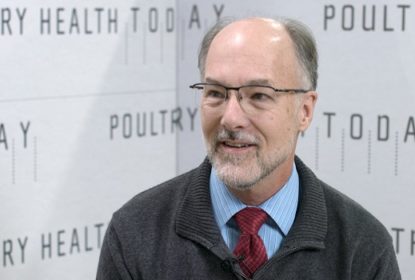
Antibiotic-free, Global TOP NEWS, Gut Health, Interviews, News, PHT GLOBAL, PHT US, Podcast, TOP NEWS, Videos
... Coccidiosis control, litter management key to NE prevention in broilers raised without antibiotics
Jan 10, 2019Jennifer GrullonComments Off on Coccidiosis control, litter management key to NE prevention in broilers raised without antibiotics
Good coccidiosis control and litter management are the two most important steps producers can take to prevent necrotic enteritis (NE) in flocks raised without antibiotics.... Heat-stress study shows need to increase ventilation with stocking density
Jan 09, 2019Jennifer GrullonComments Off on Heat-stress study shows need to increase ventilation with stocking density
As bird density increases, broiler producers need to be “more aggressive” with house ventilation to prevent heat stress in flocks, Brian Fairchild, PhD, professor, and Ming Lin Teo, graduate...... Chicks may hold clues to lameness in older birds
Jan 07, 2019Jennifer GrullonComments Off on Chicks may hold clues to lameness in older birds
Lameness in some poultry flocks has researchers searching for the cause, Suzanne Dougherty, DVM, a consulting poultry veterinarian based in Alabama, told Poultry Health Today.... It takes two: Coccidiosis vaccines effective against E. tenella after adequate cycling
Dec 26, 2018Jennifer GrullonComments Off on It takes two: Coccidiosis vaccines effective against E. tenella after adequate cycling
Coccidiosis vaccination was effective in broilers challenged with Eimeria tenella but only after vaccinal oocysts cycled twice, Laura Tensa, DVM, told Poultry Health Today.... Selection of IBV GA 08 vaccine, proper administration can minimize reactions
Dec 15, 2018Jennifer GrullonComments Off on Selection of IBV GA 08 vaccine, proper administration can minimize reactions
TOOLBOX, Issue 10: An interview with Kalen Cookson, DVM, MAM, Director of Clinical Research, Zoetis... Hurricane Florence and the poultry industry: Coping with the aftermath
Dec 13, 2018Jennifer GrullonComments Off on Hurricane Florence and the poultry industry: Coping with the aftermath
By Philip A. Stayer, DVM, MS, ACPV Corporate Veterinarian Sanderson Farms, Inc.... Can water treatments help reduce Salmonella levels before processing?
Dec 06, 2018Jennifer GrullonComments Off on Can water treatments help reduce Salmonella levels before processing?
Feed withdrawal before moving broilers to the processing plant appears to increase their susceptibility to Salmonella, indicates research from the University of Georgia.... Is genetics the key for lasting IBV immunity?
Dec 03, 2018Jennifer GrullonComments Off on Is genetics the key for lasting IBV immunity?
Manipulating the immune response may be one way infectious bronchitis virus (IBV) is controlled in the future, predict researchers studying genetic lines of poultry.... When you can’t have more than one: HVT vector or live vaccine for IBDV?
Nov 30, 2018Jennifer GrullonComments Off on When you can’t have more than one: HVT vector or live vaccine for IBDV?
TOOLBOX, Issue 3: An interview with Kalen Cookson, DVM, MAM, Director of Clinical Research, Zoetis... Fresh approach to coccidiosis needed to tackle increase in broiler gut damage
Nov 28, 2018Jennifer GrullonComments Off on Fresh approach to coccidiosis needed to tackle increase in broiler gut damage
Changes in the behavior of one of the most important coccidial pathogens means poultry producers should take a fresh look at how they deal with the parasite.... Lack of approved medications continues to stymie welfare-minded turkey producers
Nov 20, 2018Jennifer GrullonComments Off on Lack of approved medications continues to stymie welfare-minded turkey producers
Another year, another survey and more long faces on US turkey producers frustrated by the lack of approved, efficacious medications — a problem they rated as the top health issue threatening...... IBV vaccination protects broilers despite ammonia exposure
Nov 19, 2018Jennifer GrullonComments Off on IBV vaccination protects broilers despite ammonia exposure
A recent study corroborates previous findings that broilers properly vaccinated for infectious bronchitis virus (IBV) are protected from IBV challenge despite exposure to moderate levels of ammonia.... Mortality composting the right way: Tips for poultry producers
Nov 15, 2018Jennifer GrullonComments Off on Mortality composting the right way: Tips for poultry producers
By Tom Tabler, Ph.D. Extension Professor Mississippi State University Extension Service, Poultry Science Department Mississippi State, MS... Heat stress may impair immune system in broilers
Nov 08, 2018Jennifer GrullonComments Off on Heat stress may impair immune system in broilers
Heat stress in broilers induced lesions of lymphoid tissues, indicating immune system impairment, but it’s not yet known if heat stress affects the vulnerability or severity of coccidiosis.
Diagnostics, Global TOPICS, Interviews, News, PHT GLOBAL, PHT US, Podcast, Respiratory, TOPICS, Videos
... Consistency, follow-up key to controlling IBV
Nov 05, 2018Jennifer GrullonComments Off on Consistency, follow-up key to controlling IBV
Infectious bronchitis virus (IBV) is a “moving target” and trying to keep ahead of it requires consistency and follow-up, explained Sjaak de Wit, DVM, PhD, of GD Animal Health, the Netherlands.
Biosecurity, Global TOP NEWS, Infectious Diseases, Interviews, News, PHT GLOBAL, PHT US, Podcast, Respiratory, TOP NEWS, Videos
... Biosecurity, disinfection, downtime keys to better ILT control
Nov 01, 2018Jennifer GrullonComments Off on Biosecurity, disinfection, downtime keys to better ILT control
Strict biosecurity is the best defense against infectious laryngotracheitis (ILT) in broiler flocks, advises Maricarmen García, PhD, a professor at the University of Georgia.... Salmonella Infantis can complicate respiratory problems in broilers
Oct 26, 2018Jennifer GrullonComments Off on Salmonella Infantis can complicate respiratory problems in broilers
Salmonella Infantis can become a persistent problem in broilers and exacerbate mortality when combined with infectious bronchitis, experience indicates at an integrated South American poultry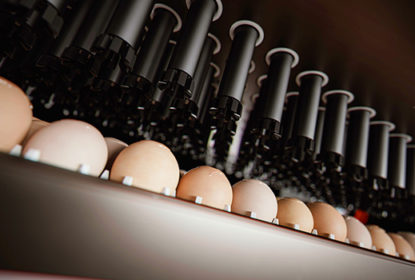
Global TOP NEWS, Hatchery, Infectious Diseases, Interviews, News, PHT GLOBAL, PHT US, Podcast, TOP NEWS, Videos
... Halting in ovo vaccination not a good option for managing hatchery bacteria
Oct 22, 2018Jennifer GrullonComments Off on Halting in ovo vaccination not a good option for managing hatchery bacteria
Higher 7-day mortality from bacterial infections in the hatchery is no reason to stop in ovo vaccination for Marek’s and other diseases, according to a consulting poultry veterinarian.... Vaccination protects broilers from IBV despite exposure to moderate ammonia levels
Oct 21, 2018Jennifer GrullonComments Off on Vaccination protects broilers from IBV despite exposure to moderate ammonia levels
Properly vaccinated commercial broilers are protected from an infectious bronchitis virus (IBV) challenge despite exposure to moderate ammonia levels, according to a study that surprised researchers.... AAAP issues call for papers for 2019 conference
Oct 18, 2018Jennifer GrullonComments Off on AAAP issues call for papers for 2019 conference
The American Association of Avian Pathologists (AAAP) is now accepting abstract submissions for its 2019 conference, Aug. 2-6, Washington, DC. The deadline is Dec. 3, 2018.... Working with FSIS to reduce condemnations and cut losses
Oct 14, 2018Jennifer GrullonComments Off on Working with FSIS to reduce condemnations and cut losses
By Douglas L. Fulnechek, DVM Senior Technical Services Veterinarian, Zoetis... Uncertain supplies present challenges for rotation-minded producers
Oct 11, 2018Jennifer GrullonComments Off on Uncertain supplies present challenges for rotation-minded producers
Poultry producers know the importance of developing a long-term strategy for maintaining the efficacy of anticoccidials, but sometimes unexpected backorders of feed medications in high demand force...... Three research-proven ways to maximize Marek’s disease control
Oct 07, 2018Jennifer GrullonComments Off on Three research-proven ways to maximize Marek’s disease control
By Tarsicio Villalobos, DVM, Zoetis... Proper water pressure, volume essential to good flock performance
Oct 03, 2018Jennifer GrullonComments Off on Proper water pressure, volume essential to good flock performance
By Tom Tabler, PhD, Extension Professor, Mississippi State University Extension Service, Poultry Science Department, Mississippi State, MS... Study shows how unchanged boots disrupt biosecurity
Sep 26, 2018Jennifer GrullonComments Off on Study shows how unchanged boots disrupt biosecurity
Poultry farmers looking for ways to reduce the spread of viruses and bacteria in their facilities need look no further than the boots on their feet.... Modified-live vaccination reduced salmonellosis in Brazilian study
Sep 20, 2018Jennifer GrullonComments Off on Modified-live vaccination reduced salmonellosis in Brazilian study
New research confirms that modified-live vaccines (MLVs) can effectively reduce salmonellosis in broilers — a leading cause of food poisoning in humans.... Special report: Poultry veterinarians teaming up to reduce condemnations, optimize food safety
Sep 18, 2018Jennifer GrullonComments Off on Special report: Poultry veterinarians teaming up to reduce condemnations, optimize food safety
Minimizing carcass condemnations and reducing the load of foodborne pathogens moving from broiler farms into processing might seem like separate production objectives — and they are.... Adapt feeding programs to reduce summer heat stress
Sep 17, 2018Jennifer GrullonComments Off on Adapt feeding programs to reduce summer heat stress
Adjusting broiler feeding programs in the summer months can help avoid the health and growth challenges associated with heat stress.... SPECIAL REPORT – IBV: Managing a moving target
Sep 07, 2018Jennifer GrullonComments Off on SPECIAL REPORT – IBV: Managing a moving target
Infectious bronchitis virus, or IBV, is a year-round threat to poultry flocks, but it's especially challenge in the cooler months when producers reduce ventilation to save on energy costs.... Trace minerals, used litter, coccidiosis control key to managing enteritis in NAE flocks
Sep 06, 2018Jennifer GrullonComments Off on Trace minerals, used litter, coccidiosis control key to managing enteritis in NAE flocks
Starting broiler flocks on used litter, coupled with effective coccidiosis control and the use of trace minerals, can help minimize necrotic enteritis (NE) in broiler flocks raised without...... Controlling coccidiosis helps prevent histomoniasis in broiler pullets
Sep 04, 2018Jennifer GrullonComments Off on Controlling coccidiosis helps prevent histomoniasis in broiler pullets
The incidence of histomoniasis, commonly known as blackhead disease, is increasing in Southeastern US broiler-breeding operations — and young breeders 25 to 30 weeks old seem particularly...... E. coli becoming more common with rise in ‘no antibiotics ever’ programs
Aug 31, 2018Jennifer GrullonComments Off on E. coli becoming more common with rise in ‘no antibiotics ever’ programs
With the removal of antibiotics in the hatchery in “no antibiotics ever” (NAE) programs, the bacterium Escherichia coli is becoming more of a problem at many broiler complexes.... Marek’s and Salmonella: John Smith, DVM, offers insights on two new broiler-vaccination trends
Aug 23, 2018Jennifer GrullonComments Off on Marek’s and Salmonella: John Smith, DVM, offers insights on two new broiler-vaccination trends
John Smith, DVM, poultry veterinarian for Alectryon in Baldwin, Georgia, shared ideas with Poultry Health Today on two changes in broiler-vaccination strategies in the US poultry industry.... Coccidiosis control: New strategies for a new era
Aug 17, 2018Jennifer GrullonComments Off on Coccidiosis control: New strategies for a new era
Coccidiosis can be controlled in broilers without antibiotics as long as producers pay closer attention to hatchery coccidiosis vaccination procedures, brooding and stocking rates, Greg Mathis, PhD,...... Early identification needed to protect broilers from reovirus
Aug 16, 2018Jennifer GrullonComments Off on Early identification needed to protect broilers from reovirus
Reovirus is mutating every 2 to 3 years, which is making it difficult to protect broilers from the effects of the virus, Don Waldrip, DVM, technical service veterinarian for Zoetis, told Poultry...... Putting paper under chick’s drinkers: Is it really helpful?
Aug 08, 2018Jennifer GrullonComments Off on Putting paper under chick’s drinkers: Is it really helpful?
Placing paper under water lines increases water consumption by baby chicks, but only for the first 3 or 4 hours after house placement, research indicates.... Blackhead disease causes reduced egg production in layer hens
Aug 03, 2018Jennifer GrullonComments Off on Blackhead disease causes reduced egg production in layer hens
Blackhead disease can cause an important drop in egg production among commercial layer hens, Christina Sigmon of North Carolina State University, said during the 2018 International Poultry Scientific...... Research focusing on new controls for coccidiosis, relationship with Salmonella
Aug 02, 2018Jennifer GrullonComments Off on Research focusing on new controls for coccidiosis, relationship with Salmonella
Alternative products for coccidiosis control remain the focus of research, but so far, the results are inconsistent, Sam Hendrix, DVM, veterinarian and researcher at Colorado Quality Research, told...... Let there be light: Early exposure to UV aids broiler behavior, performance
Jul 27, 2018Jennifer GrullonComments Off on Let there be light: Early exposure to UV aids broiler behavior, performance
Adding windows to poultry houses is an inexpensive way to improve the environment for broilers and possibly improve productivity, according to Rachel Lynn Dennis, PhD, assistant professor at the...... Footpad dermatitis a greater concern in chickens grown to older ages
Jul 26, 2018Jennifer GrullonComments Off on Footpad dermatitis a greater concern in chickens grown to older ages
Footpad dermatitis is more likely to be a problem among broilers grown to an older age, but it can be remedied if producers intervene in time, Tom Tabler, PhD, professor with Mississippi State...... Global measures to tackling avian influenza
Jul 20, 2018Jennifer GrullonComments Off on Global measures to tackling avian influenza
Efficient biosecurity systems are essential to protecting poultry from the risk of avian influenza. However, some countries are better at enforcing biosecurity than others, reports Poultry Digital.... Natural disease resistance could be bred into chickens, scientists say
Jul 20, 2018Jennifer GrullonComments Off on Natural disease resistance could be bred into chickens, scientists say
Selecting birds that are naturally more resistant to disease could help the poultry industry reduce antibiotics use in the future, say researchers.... Specialists share tips for optimizing immunity in ‘no antibiotics ever’ and ‘reduced use’ broiler flocks
Jul 14, 2018Jennifer GrullonComments Off on Specialists share tips for optimizing immunity in ‘no antibiotics ever’ and ‘reduced use’ broiler flocks
Finding ways to optimize immunity and give broilers more “staying power” could be the best strategy for maintaining the health and welfare of broilers, according to disease specialists at a...... Special Report: Nixing necrotic enteritis in broilers
Jul 09, 2018Jennifer GrullonComments Off on Special Report: Nixing necrotic enteritis in broilers
This week poultry specialists will gather in Denver, Colorado, for the second International Conference on Necrotic Enteritis. In this special report, Poultry Health Today looks at the impact of this...... Vaccination followed with feed medication gives pullets added protection against coccidiosis
Jul 02, 2018Jennifer GrullonComments Off on Vaccination followed with feed medication gives pullets added protection against coccidiosis
Inadequate coccidiosis protection in pullets can lead to health issues ranging from uneven weight gain to mortality.... World’s poultry health experts flock to Denver for 61st AAAP conference
Jun 30, 2018Jennifer GrullonComments Off on World’s poultry health experts flock to Denver for 61st AAAP conference
Poultry health professionals from more than 25 countries will gather in Denver, Colorado, July 13-17, to get the latest research, innovations and insights on disease management, biosecurity,...... Special Report: What’s the future of ionophores in poultry?
Jun 29, 2018Jennifer GrullonComments Off on Special Report: What’s the future of ionophores in poultry?
In this special report, Poultry Health Today looks at the role of ionophores in managing a ubiquitous disease that costs the world's poultry industry more than $2.4 billion a year.... The link between Salmonella and intestinal health
Jun 26, 2018Jennifer GrullonComments Off on The link between Salmonella and intestinal health
By Charles L. Hofacre, DVM, MAM, PhD President, Southern Poultry Research Group, Inc. Professor Emeritus, University of Georgia
Global TOP NEWS, Infectious Diseases, Interviews, PHT GLOBAL, PHT US, Podcast, Respiratory, TOP NEWS, Videos
... Is MS the next ‘big, bad Mycoplasma’ for US poultry?
Jun 20, 2018Jennifer GrullonComments Off on Is MS the next ‘big, bad Mycoplasma’ for US poultry?
The US poultry industry is reporting more problems with virulent Mycoplasma synoviae according to Naola Ferguson, DVM... More amino acids, feed aid broiler chicks vaccinated for coccidiosis
Jun 19, 2018Jennifer GrullonComments Off on More amino acids, feed aid broiler chicks vaccinated for coccidiosis
Feeding broilers a diet high in amino acids, along with more feed, can minimize the adverse effects on performance that sometimes occur after coccidiosis vaccination.... PROHEALTH to Present Sustainable Solutions for Broiler Health at VIV Europe 2018
Jun 18, 2018Jennifer GrullonComments Off on PROHEALTH to Present Sustainable Solutions for Broiler Health at VIV Europe 2018
Smart ideas for sustainable poultry disease management will be featured in a special PROHEALTH workshop at VIV Europe 2018, to be held June 20-22 in Utrecht, Netherlands.... Team effort by human, animal sectors needed to ensure responsible antibiotic use worldwide
Jun 14, 2018Jennifer GrullonComments Off on Team effort by human, animal sectors needed to ensure responsible antibiotic use worldwide
While the poultry and livestock sectors have drawn the ire of consumer and medical groups for the growth of antimicrobial resistance, it is wrong to “partition blame,” Randy Singer, DVM, PhD,...... Vaccinating broilers against Salmonella can help reduce pathogen’s prevalence at processing
May 24, 2018Jennifer GrullonComments Off on Vaccinating broilers against Salmonella can help reduce pathogen’s prevalence at processing
Vaccination of broilers against Salmonella can help poultry producers reduce the pathogen’s prevalence at processing and may also benefit bird performance, Kalen Cookson, DVM, director of clinical...... Loose stools linked to blackhead disease transmission in turkeys
May 17, 2018Jennifer GrullonComments Off on Loose stools linked to blackhead disease transmission in turkeys
Enteric inflammation and loose stools can affect the rate that turkeys contract blackhead disease.... Gene technology has potential to multiply vaccine benefits
May 15, 2018Jennifer GrullonComments Off on Gene technology has potential to multiply vaccine benefits
Scientists in the UK have discovered a way to modify a Marek’s disease vaccination so that it could be potentially be used to protect against a number of significant poultry diseases.... On-farm Salmonella control helps prevent processing plant contamination
May 11, 2018Jennifer GrullonComments Off on On-farm Salmonella control helps prevent processing plant contamination
Contaminated chicken feathers and feet may be the primary vectors for transmitting Salmonella from poultry houses to processing plants, according to Martha Pulido, DVM, PhD, Mississippi State...... Buckling down on biosecurity
May 07, 2018Jennifer GrullonComments Off on Buckling down on biosecurity
For this special report, our editors talked with disease experts about what poultry companies can do to buckle down on biosecurity and protect their flocks from infectious diseases.... ‘Turkeys are suffering’ without good control of coccidiosis
May 04, 2018Jennifer GrullonComments Off on ‘Turkeys are suffering’ without good control of coccidiosis
Turkeys are suffering from coccidiosis due to a lack of available medications, according to Greg Mathis, PhD, Southern Poultry Research, Athens, Georgia.... Tyson vet: Act quickly on unexplained poultry mortality
May 01, 2018Jennifer GrullonComments Off on Tyson vet: Act quickly on unexplained poultry mortality
Quick action by breeder managers and veterinarians is credited with the rapid resolution of an avian influenza (AI) outbreak in Tennessee in March of 2017.... Industry trendwatcher offers insights on future of antibiotic-free poultry production
May 01, 2018Jennifer GrullonComments Off on Industry trendwatcher offers insights on future of antibiotic-free poultry production
Industry trendwatcher and analyst Greg Rennier, PhD, recently sat down with Poultry Health Today to share his thoughts on antibiotic-free production and where the poultry industry is heading in 2017...... Rennier: NAE programs represented 40% of US broiler feeds in 2017
Apr 30, 2018Jennifer GrullonComments Off on Rennier: NAE programs represented 40% of US broiler feeds in 2017
Chickens raised without antibiotics of any type consumed 40% of the broiler feed produced un the US in 2017, according to Greg Rennier, PhD, president of Rennier Associates Inc.... Foregoing CAV breeder vaccination based on ELISA results can backfire
Apr 19, 2018Jennifer GrullonComments Off on Foregoing CAV breeder vaccination based on ELISA results can backfire
Not vaccinating broiler breeders for chicken anemia virus (CAV) because ELISA results show detectable antibodies could be asking for trouble, says Guillermo Zavala, DVM, PhD, Avian Health...... C. perfringens on broiler meat can survive processing, potentially sicken consumers
Apr 16, 2018Jennifer GrullonComments Off on C. perfringens on broiler meat can survive processing, potentially sicken consumers
Listen to or download the podcast Most broiler producers know the economic impact of necrotic enteritis caused by Clostridium perfringens, particularly in birds raised without antibiotics. Now...... USDA, industry groups take issue with WHO’s statement on poultry antibiotics
Apr 13, 2018Jennifer GrullonComments Off on USDA, industry groups take issue with WHO’s statement on poultry antibiotics
The USDA’s chief scientist and several scientific and industry organizations took issue with the World Health Organization’s recent news release recommending that poultry and livestock producers...... Woody breast continues to baffle researchers
Apr 12, 2018Jennifer GrullonComments Off on Woody breast continues to baffle researchers
Woody breast is a relatively new disease that adversely affects meat quality during processing, but poultry scientists still don’t understand it’s underlying causes, said Luke Borst, DVM, PhD, a...... Lack of medications, veterinarians hamper turkey industry
Apr 10, 2018Jennifer GrullonComments Off on Lack of medications, veterinarians hamper turkey industry
The US turkey industry continues to be hampered by a lack of approved efficacious drugs, according to a 2017 survey. Since 2005, four medications have been withdrawn, leaving the industry without any...... Biosecurity: ‘It doesn’t have to be boring’
Apr 10, 2018Jennifer GrullonComments Off on Biosecurity: ‘It doesn’t have to be boring’
Even though biosecurity is a critically important subject, many poultry producers tune it out — for the simple reason that it bores them, said Nathaniel Tablante, DVM, a professor and poultry...... Special Report: Managing the two toughest diseases of NAE production
Apr 06, 2018Jennifer GrullonComments Off on Special Report: Managing the two toughest diseases of NAE production
Ask any poultry veterinarian. They will probably tell you that the biggest hurdles to successful 'No Antibiotics Ever' production are coccidiosis and necrotic enteritis.... Two symposia on poultry enteric disease set stage for 2018 AAAP Conference
Apr 05, 2018Jennifer GrullonComments Off on Two symposia on poultry enteric disease set stage for 2018 AAAP Conference
Two symposia focused on enteric disease in poultry will be held immediately prior to the 2018 American Association of Avian Pathologists (AAAP) annual conference set for this July in Denver.... Seven misconceptions about IBD in broilers
Mar 30, 2018Jennifer GrullonComments Off on Seven misconceptions about IBD in broilers
Kalen Cookson, DVM, is the director of clinical research, poultry, Zoetis. He explained the common misconceptions about infectious bursal disease (IBD) to Poultry Health Today.... Layer-hen stocking density affects Salmonella shedding
Mar 15, 2018Jennifer GrullonComments Off on Layer-hen stocking density affects Salmonella shedding
Lower stocking density for laying hens was associated with less fecal shedding of Salmonella Heidelberg in a USDA study.... No simple answer to laying hen sustainability, scientists say
Mar 15, 2018Jennifer GrullonComments Off on No simple answer to laying hen sustainability, scientists say
Enriched cages are the most sustainable layer housing systems in terms of profit, environmental and welfare criteria, experts say.... 6 steps to increasing broiler feed intake
Mar 15, 2018Jennifer GrullonComments Off on 6 steps to increasing broiler feed intake
Making small management changes on poultry farms and tracking their effects can help increase feed intake and maximize profitability, according to a leading nutritionist.... Import restrictions enforced after avian flu outbreaks in Africa
Mar 15, 2018Jennifer GrullonComments Off on Import restrictions enforced after avian flu outbreaks in Africa
Live chicken imports have been restricted in Zambia has part of the government’s efforts to limit the resurgence of a highly pathogenic form of avian influenza (HPAI).... ‘Inspect what you expect’ applies to poultry vaccination crews
Mar 09, 2018Jennifer GrullonComments Off on ‘Inspect what you expect’ applies to poultry vaccination crews
By Philip A. Stayer, DVM, MS, ACPV Corporate Veterinarian Sanderson Farms, Inc.... Yeast protein could help tackle China’s Avian ‘Flu problem’
Mar 05, 2018Jennifer GrullonComments Off on Yeast protein could help tackle China’s Avian ‘Flu problem’
A protein found in yeast could help scientists in China tackle avian influenza in poultry flocks.... Special Report: E. coli more a threat with reduced antibiotic usage
Feb 27, 2018Jennifer GrullonComments Off on Special Report: E. coli more a threat with reduced antibiotic usage
Once an isolated problem in long-lived birds, E. coli has become more prevalent in broiler and turkey flocks as poultry companies reduce or eliminate antibiotics in the the hatchery and in grower...... Can improper vaccination make IBV worse?
Feb 23, 2018Jennifer GrullonComments Off on Can improper vaccination make IBV worse?
Improper vaccination not only fails to protect flocks from infectious bronchitis virus (IBV), but it can also make the problem worse, a leading poultry health expert says.... Registration now open for 2018 AAAP Conference
Feb 22, 2018Jennifer GrullonComments Off on Registration now open for 2018 AAAP Conference
Registration is now open for the American Association of Avian Pathologists’ 61st annual conference which will be held July 13-17, 2018 in Denver, Colorado.... How mutations, antigenic drift affect IBD management
Feb 19, 2018Jennifer GrullonComments Off on How mutations, antigenic drift affect IBD management
Farms affected by variant infectious bursal disease (IBD) viruses may find that currently available IBD vaccines aren’t always effective, said Daral Jackwood, PhD, professor in food animal research...... The case for built-up litter in US broiler complexes
Feb 18, 2018Jennifer GrullonComments Off on The case for built-up litter in US broiler complexes
By John A. Smith, DVM, MS, MAM Alectryon, LLC Baldwin, GA -- Built-up litter isn't necessarily negative. In fact, it may have multiple benefits...... Why infectious bronchitis is so resilient — and what broiler companies can do about it
Feb 16, 2018Jennifer GrullonComments Off on Why infectious bronchitis is so resilient — and what broiler companies can do about it
Control of infectious bronchitis (IB) requires good biosecurity, good management and rigorous administration of a vaccine that matches the circulating virus as closely as possible, John Smith, DVM,...
Antibiotic-free, Interviews, ippe2016- Interviews with experts, PHT GLOBAL, PHT US, Sustainability, Videos
... Antibiotic-free poultry production: Is it sustainable on a large scale?
Feb 13, 2018Jennifer GrullonComments Off on Antibiotic-free poultry production: Is it sustainable on a large scale?
Phil Stayer, DVM, head veterinarian at Sanderson Farms, is worried about what he calls an "anti-technology movement" directed at the US poultry industry, particularly as it relates to veterinary care...... E. coli vaccination reduces antibiotic use in broilers
Feb 12, 2018Jennifer GrullonComments Off on E. coli vaccination reduces antibiotic use in broilers
New studies showed that vaccination against Escherichia coli significantly reduced antibiotic use on commercial broiler farms, particularly in birds at high risk of infection.... Clostridial dermatitis: Why is it so prevalent in turkeys?
Feb 09, 2018Jennifer GrullonComments Off on Clostridial dermatitis: Why is it so prevalent in turkeys?
Skin lesions in turkeys open the door to Clostridium infections and clostridial dermatitis, the most important disease in the turkey industry, according to a study by Kakambi Nagaraja, PhD,...... H9N2 could devastate America’s poultry industry
Feb 06, 2018Jennifer GrullonComments Off on H9N2 could devastate America’s poultry industry
H9N2, a low-pathogenic avian influenza virus common in parts of Asia, the Middle East and North Africa, would be difficult to control if introduced to the US, said David Suarez, a research leader...... Poultry Health Today lines up video interviews with leading poultry experts at IPPE
Jan 29, 2018Jennifer GrullonComments Off on Poultry Health Today lines up video interviews with leading poultry experts at IPPE
More than two dozen poultry-health experts and trend watchers will be interviewed on camera over the next three days as part of Poultry Health Today’s news coverage of the 2018 International...... More poultry research focusing on antibiotic alternatives
Jan 26, 2018Jennifer GrullonComments Off on More poultry research focusing on antibiotic alternatives
The poultry industry’s focus on alternative approaches to managing gut health should help preserve the efficacy of the few remaining antibiotics it has available, said Donna Carver, DVM, PhD.... Is feed a vector for avian influenza virus?
Jan 25, 2018Jennifer GrullonComments Off on Is feed a vector for avian influenza virus?
Layer feed does not appear to be a likely vector for transmitting the avian influenza (AI) virus, based on research conducted by Yuko Sato, DVM, of Iowa State University.... Planning anticoccidial rotation strategies: Consider the consequences
Jan 25, 2018Jennifer GrullonComments Off on Planning anticoccidial rotation strategies: Consider the consequences
Anticoccidial rotation strategies help reduce the health and economic impact of coccidiosis, while preserving the efficacy of the limited range of tools available for managing it.... Special Report: Stopping Salmonella
Jan 23, 2018Jennifer GrullonComments Off on Special Report: Stopping Salmonella
Salmonella is a naturally occurring bacterial pathogen that, if left uncontrolled, can compromise food safety and rattle the foundation of any poultry company. In this special report, Poultry Health...... Closing in on coccidiosis: How metagenomics can help
Jan 19, 2018Jennifer GrullonComments Off on Closing in on coccidiosis: How metagenomics can help
Identifying coccidial species by metagenomics can help producers fine-tune their coccidiosis-control programs, said Ryan Snyder, a graduate student in the pathobiology department at the University of...... Commercial and backyard poultry production: Bringing two worlds together for better biosecurity
Jan 14, 2018Jennifer GrullonComments Off on Commercial and backyard poultry production: Bringing two worlds together for better biosecurity
by Tom Tabler, PhD Extension Professor Mississippi State University Extension Service, Poultry Science Department Mississippi State, MS... When lysine is too much of a good thing
Jan 11, 2018Jennifer GrullonComments Off on When lysine is too much of a good thing
Lysine hydrochloride is an essential amino acid used in poultry diets to help ensure balanced nutrition and flock performance. But as with anything else, it’s possible for birds to get too much of...... Site-specific biosecurity key to disease protection
Jan 09, 2018Jennifer GrullonComments Off on Site-specific biosecurity key to disease protection
Egg producers are being urged to not adopt a “one size fits all” approach to biosecurity in a bid to keep avian influenza (AI) away from their flocks this winter.... South African producers ‘unprepared’ for bird flu, expert says
Jan 08, 2018Jennifer GrullonComments Off on South African producers ‘unprepared’ for bird flu, expert says
South Africa’s poultry farmers are scrambling to boost biosecurity measures after being “caught out” by an outbreak of avian influenza, according one of the country’s top vets.... Necrotic enteritis and age of litter: What’s the connection in broilers?
Jan 02, 2018Jennifer GrullonComments Off on Necrotic enteritis and age of litter: What’s the connection in broilers?
Broilers raised on used litter develop better immunity to necrotic enteritis (NE) than birds raised on new litter when challenged early with Clostridium perfringens, Steve Davis, DVM, president of...... Non-ionophore anticoccidial may help manage necrotic enteritis in RWA flocks
Dec 25, 2017Jennifer GrullonComments Off on Non-ionophore anticoccidial may help manage necrotic enteritis in RWA flocks
Flocks raised without antibiotics (RWA) that received a non-ionophore anticoccidial after coccidiosis vaccination had fewer necrotic enteritis (NE) lesions, less mortality and better feed conversion...... Easy mistakes to avoid when managing respiratory disease in poultry
Dec 21, 2017Jennifer GrullonComments Off on Easy mistakes to avoid when managing respiratory disease in poultry
A methodical approach to managing respiratory disease in poultry can help veterinarians avoid misinterpreting data and making mistakes, according to David French, DVM, Sanderson Farms.... Plan B: Using sentinel birds to track poultry viruses when you can’t obtain SPF birds
Dec 15, 2017Jennifer GrullonComments Off on Plan B: Using sentinel birds to track poultry viruses when you can’t obtain SPF birds
Sometimes the best way to identify disease problems is to use sentinel birds along with other diagnostic tools, but the specific-pathogen-free (SPF) birds used for this purpose aren’t always...... Broiler-house management is key to preventing winter respiratory disease
Dec 15, 2017Jennifer GrullonComments Off on Broiler-house management is key to preventing winter respiratory disease
By Tak Niino, VMD Technical services veterinarian Zoetis Inc.... Paw quality in broilers: Why it’s important
Dec 13, 2017Jennifer GrullonComments Off on Paw quality in broilers: Why it’s important
By Tom Tabler, PhD Extension Professor Mississippi State University Extension Service, Poultry Science Department Mississippi State, Mississippi... Deadly duo: Study shows link between E. maxima, Clostridium
Dec 12, 2017Jennifer GrullonComments Off on Deadly duo: Study shows link between E. maxima, Clostridium
New research by Callie McQuain, DVM, veterinarian and grad student at the University of Georgia, substantiates anecdotal field experience indicating that Eimeria maxima is the type of coccidia that...... Avian influenza viruses can persist in footbaths and manure
Dec 08, 2017Jennifer GrullonComments Off on Avian influenza viruses can persist in footbaths and manure
Growers shouldn’t assume the disinfectants they use in footbaths are effective against avian influenza (AI), indicates a study from the University of California–Davis.... Is incentivized vaccination the answer to poultry’s public-health woes?
Dec 07, 2017Jennifer GrullonComments Off on Is incentivized vaccination the answer to poultry’s public-health woes?
Governments and retailers should incentivize broiler producers to make better use of vaccines that could help protect public health, according to an expert in poultry infections.... Check farm biosecurity now ahead of potential avian flu return, disease expert says
Dec 07, 2017Jennifer GrullonComments Off on Check farm biosecurity now ahead of potential avian flu return, disease expert says
Poultry producers should assess their farm biosecurity in preparation for a return of avian influenza this winter, according to an expert in the spread and control on animal disease.... Ruling the roost: Alternative or conventional chicken?
Dec 05, 2017Jennifer GrullonComments Off on Ruling the roost: Alternative or conventional chicken?
By Philip A. Stayer, DVM, MS, ACPV Corporate Veterinarian Sanderson Farms, Inc.... Campylobacter in poultry: An elusive pathogen
Nov 30, 2017Jennifer GrullonComments Off on Campylobacter in poultry: An elusive pathogen
By Orhan Sahin, DVM, PhD, Dip ACVM Assistant Professor Veterinary Diagnostic and Production Animal Medicine Iowa State University, Ames, Iowa... AAAP issues call for papers for 2018 conference in Denver
Nov 24, 2017Jennifer GrullonComments Off on AAAP issues call for papers for 2018 conference in Denver
Abstracts for the 2018 American Association of Avian Pathologists conference, July 13-17, Denver, are now being accepted until Dec. 1, 2017.... 44 million ‘respectable’ birds on the menu this Thanksgiving
Nov 20, 2017Jennifer GrullonComments Off on 44 million ‘respectable’ birds on the menu this Thanksgiving
If one of America’s founding fathers, Benjamin Franklin, had his way in the late 1700s, the turkey would have been the US national bird instead of the bald eagle — a majestic but imposing raptor...... Immune-response research could yield new IB strategies for poultry
Nov 14, 2017Jennifer GrullonComments Off on Immune-response research could yield new IB strategies for poultry
Research into the immune response of chickens could help lead to strategies that enable chickens to resist infectious bronchitis (IB), Rodrigo Gallardo, DVM, PhD, professor, University of California...... Necrotic enteritis: Can it be managed effectively in NAE flocks?
Nov 10, 2017Jennifer GrullonComments Off on Necrotic enteritis: Can it be managed effectively in NAE flocks?
Necrotic enteritis (NE) is not only a big problem in flocks raised without antibiotics, there’s a wide variation in how it presents itself, Steve Davis, DVM, president of Colorado Quality Research,...... Salmonella on carcass skin can contaminate ground turkey
Nov 06, 2017Jennifer GrullonComments Off on Salmonella on carcass skin can contaminate ground turkey
Salmonella on the skin, rather than in infected muscle tissue, may be a significant contributor to ground-turkey contamination, indicates a study presented at the 2017 annual meeting of the American...... New Marek’s test helps ensure successful vaccination, biosecurity
Oct 23, 2017Jennifer GrullonComments Off on New Marek’s test helps ensure successful vaccination, biosecurity
A new test is helping producers in Europe better protect their flocks against Marek’s disease (MD).... Infectious bursal disease: ‘It’s never black and white’
Oct 20, 2017Jennifer GrullonComments Off on Infectious bursal disease: ‘It’s never black and white’
Daral Jackwood, PhD, a professor at Ohio State University, is best known in the US poultry industry as the go-to expert on infectious bursal disease (IBD). In an interview with Poultry Health Today,...... E. maxima linked to mortality in broilers vaccinated for coccidiosis
Oct 17, 2017Jennifer GrullonComments Off on E. maxima linked to mortality in broilers vaccinated for coccidiosis
Eimeria maxima in broilers vaccinated against coccidiosis appears to be an important cause of mortality, according to the preliminary results of a study presented at the 2017 annual meeting of the...... Understanding the clinical picture key to effective IB control
Oct 13, 2017Jennifer GrullonComments Off on Understanding the clinical picture key to effective IB control
Avian infectious bronchitis virus (IBV) is a highly contagious coronavirus found in chickens worldwide that costs the US poultry industry millions of dollars annually.... Three-pronged E. coli strategy to help cut losses, improve profitability
Oct 11, 2017Jennifer GrullonComments Off on Three-pronged E. coli strategy to help cut losses, improve profitability
Managing Escherichia coli infection in commercial poultry flocks has to be tackled on three fronts to help cut losses and improve profitability, says Allan Ball, of the Slate Hall Veterinary Practice...... New flock-management trends call for new E. coli-management strategies, vets say
Oct 10, 2017Jennifer GrullonComments Off on New flock-management trends call for new E. coli-management strategies, vets say
Two poultry veterinarians say that prevention of Escherichia coli infection is key as management trends toward free-range housing and reduced antibiotic use.... Infectious bronchitis: Better diagnostics key to more effective vaccination
Oct 09, 2017Jennifer GrullonComments Off on Infectious bronchitis: Better diagnostics key to more effective vaccination
Identification of variant infectious bronchitis viruses (IBVs) has improved with the development of a real-time PCR (qPCR) test that can distinguish the type of virus and determine if it’s vaccine-...... Poultry veterinarians facing new challenges with NAE trend, food safety guidelines
Oct 06, 2017Jennifer GrullonComments Off on Poultry veterinarians facing new challenges with NAE trend, food safety guidelines
The NAE production movement has helped reduce antibiotic use in poultry for good reason, but veterinarians need to make sure the pendulum doesn’t swing so far they have no antibiotics left to...... Proper windrowing can minimize disease, benefit environmental management
Oct 01, 2017Jennifer GrullonComments Off on Proper windrowing can minimize disease, benefit environmental management
By George W. Malone, MS Malone Poultry Consulting Princess Anne, Maryland... Successful ABF production: Mastered technique or corporate culture?
Sep 29, 2017Jennifer GrullonComments Off on Successful ABF production: Mastered technique or corporate culture?
Indiana's Miller Poultry's owner and president Galen Miller and production manager Stephen Shepard discuss their experiences, priorities, management style and business philosophy that led to 30%...... Hofacre: There’s always room for improvement with Salmonella
Sep 21, 2017Jennifer GrullonComments Off on Hofacre: There’s always room for improvement with Salmonella
Most US poultry companies are doing an “outstanding job” controlling Salmonella, but there's always room for improvement.... Farmers told to ‘stick to guidelines’ for antibiotics as experts question conventional usage
Sep 17, 2017Jennifer GrullonComments Off on Farmers told to ‘stick to guidelines’ for antibiotics as experts question conventional usage
UK farmers and veterinarians have been told to continue to follow prescription guidelines for treating animals with antibiotics after a group of health experts suggested current guidance needed to be...... Livestock farming standards to get boost under antimicrobial-resistance plan
Sep 17, 2017Jennifer GrullonComments Off on Livestock farming standards to get boost under antimicrobial-resistance plan
The European Commission has unveiled plans to promote better global livestock farming standards in a bid to combat the growing threat of antimicrobial resistance (AMR) in animals and humans.... Protecting longer-life layers against infectious bronchitis
Sep 08, 2017Jennifer GrullonComments Off on Protecting longer-life layers against infectious bronchitis
With many laying hens now remaining in production up to 500 days, it’s time to rethink infectious bronchitis (IB) protection protocols, says Dieter Vancraeynest, DVM, PhD, a poultry veterinarian at...... Alternative therapies called best long-term hope for blackhead disease in turkeys
Sep 08, 2017Jennifer GrullonComments Off on Alternative therapies called best long-term hope for blackhead disease in turkeys
Alternative treatments may be the only long-term hope for managing blackhead in turkeys, said Robert Beckstead, PhD, turkey health specialist, North Carolina State University.... Five-year plan launched to limit Hong Kong’s poultry antibiotic use
Sep 05, 2017Jennifer GrullonComments Off on Five-year plan launched to limit Hong Kong’s poultry antibiotic use
Hong Kong has launched a five-year action plan to reduce the amount of antibiotics used by farmers and limit the threat of antimicrobial resistance in the city.... Mobile app to help Egyptian poultry farmers control disease
Sep 05, 2017Jennifer GrullonComments Off on Mobile app to help Egyptian poultry farmers control disease
Egyptian poultry producers are set to benefit from a high-tech tool designed to help them identify early signs of avian influenza and other poultry diseases.... Superbug warning over India’s poultry antibiotics use
Sep 05, 2017Jennifer GrullonComments Off on Superbug warning over India’s poultry antibiotics use
The use of antibiotics for growth promotion in Indian poultry production is helping to breed bacteria that are highly resistant to most antibiotics, scientists have warned.... US flocks have room to improve in avian flu protection
Sep 05, 2017Jennifer GrullonComments Off on US flocks have room to improve in avian flu protection
The US poultry sector can still do more to protect flocks from avian influenza, despite making significant efforts to improve biosecurity since the last major outbreak of the disease.... UK makes significant cuts in poultry antibiotic use
Sep 05, 2017Jennifer GrullonComments Off on UK makes significant cuts in poultry antibiotic use
The UK poultry sector has reduced its antibiotic use by more than 70% over four years, according to latest industry figures.... Coccidiosis, necrotic enteritis challenge cage-free layer systems
Aug 30, 2017Jennifer GrullonComments Off on Coccidiosis, necrotic enteritis challenge cage-free layer systems
Cage-free housing for egg layers allows birds to exhibit more natural behaviors, but it also carries an increased risk for morbidity and mortality...... Compartmentalization key to global avian flu control
Aug 30, 2017Jennifer GrullonComments Off on Compartmentalization key to global avian flu control
Standardizing biosecurity measures across the poultry sector is key to protecting birds from avian influenza and ensuring outbreaks do not decimate trade, according to a poultry health expert.... Looming crisis for poultry: Finding and funding veterinarians
Aug 29, 2017Jennifer GrullonComments Off on Looming crisis for poultry: Finding and funding veterinarians
The poultry industry is rife with job openings for veterinarians that can’t be filled, according to Mark Jackwood, PhD, University of Georgia.... Managing coccidiosis successfully in poultry raised without antibiotics
Aug 25, 2017Jennifer GrullonComments Off on Managing coccidiosis successfully in poultry raised without antibiotics
Producers raising flocks without antibiotics are finding new ways to manage gut health and coccidiosis with vaccination and anticoccidials, said Greg Mathis, PhD, coccidiosis specialist.... Finding the right balance with antibiotics and flock welfare
Aug 08, 2017Jennifer GrullonComments Off on Finding the right balance with antibiotics and flock welfare
Part 3: The issue of antibiotics in poultry continues to divide the poultry industry, with one side supporting routine preventive use and the other committed to raising birds without antibiotics.... Sanderson Farms targets ‘marketing gimmicks’ about antibiotics
Aug 04, 2017Jennifer GrullonComments Off on Sanderson Farms targets ‘marketing gimmicks’ about antibiotics
A new ad campaign released by Sanderson Farms Inc. seeks to debunk myths surrounding the use of antibiotics in US poultry production while exposing what it calls “marketing gimmicks designed to...... New rule, same baseline skews sampling for foodborne pathogens
Aug 03, 2017Jennifer GrullonComments Off on New rule, same baseline skews sampling for foodborne pathogens
Part 2: Last year, the US poultry industry switched from buffered peptone water to “neutralized” buffered peptone to reduce the risk of false negatives when sampling whole chickens and parts for...... US broiler industry steadily reducing incidence of foodborne pathogens
Aug 02, 2017Jennifer GrullonComments Off on US broiler industry steadily reducing incidence of foodborne pathogens
Part 1: The US broiler industry is successfully and steadily reducing the prevalence of Salmonella and Campylobacter on chicken parts since the USDA’s new performance standards took effect.... ‘Raised without antibiotics’ marketing has nothing to do with science
Jul 28, 2017Jennifer GrullonComments Off on ‘Raised without antibiotics’ marketing has nothing to do with science
By David French, DVM Staff Veterinarian Sanderson Farms... China launches national plan to tackle antimicrobial resistance
Jul 26, 2017Jennifer GrullonComments Off on China launches national plan to tackle antimicrobial resistance
China’s government has launched a national plan to reduce antimicrobial use in poultry and livestock production in an effort to limit drug resistance.... Organic poultry consumers should understand disease-control challenges
Jul 26, 2017Jennifer GrullonComments Off on Organic poultry consumers should understand disease-control challenges
Growing demand for eggs and poultry produced from outdoor flocks requires greater consumer understanding about the challenges farmers face in protecting birds from avian influenza.... Can sensors offer real-time disease detection?
Jul 26, 2017Jennifer GrullonComments Off on Can sensors offer real-time disease detection?
Scientists are developing affordable sensors that could eventually be used to detect diseases in poultry sheds and alert producers to outbreaks in real time.... AI vaccination needed in China to prevent global pandemic, scientists say
Jul 26, 2017Jennifer GrullonComments Off on AI vaccination needed in China to prevent global pandemic, scientists say
Vaccination against avian influenza must become a standard procedure in China to avoid the risk of the the disease mutating and becoming a global pandemic, scientists have warned.... Broiler research reveals campylobacter treatment challenge
Jul 26, 2017Jennifer GrullonComments Off on Broiler research reveals campylobacter treatment challenge
The immune response of broilers does not develop fast enough to enable birds to fight off campylobacter present in the gut, scientists say.... In ovo feeding predicted to drive genetic potential of birds in future
Jul 26, 2017Jennifer GrullonComments Off on In ovo feeding predicted to drive genetic potential of birds in future
Feeding chicks in ovo and imprinting behavior through diet in the first days of life will help producers get the most from broilers’ genetic potential in future, says a leading poultry... Reducing food-borne bacterial infections must be team effort
Jul 25, 2017Jennifer GrullonComments Off on Reducing food-borne bacterial infections must be team effort
Increased pressure to reduce bacterial food-borne infections in consumers is affecting poultry production from start to finish, panelists reported at a food safety roundtable, “Lightening the Load:...... AAAP premieres video at 60th annual conference
Jul 25, 2017Jennifer GrullonComments Off on AAAP premieres video at 60th annual conference
A video saluting accomplishments of the American Association of Avian Pathologists made its debut on the closing night of the group’s 60th annual conference.... Poultry veterinarian named to AVMA Future Leaders program
Jul 23, 2017Jennifer GrullonComments Off on Poultry veterinarian named to AVMA Future Leaders program
Tak Niino, VMD, a senior poultry technical services representative for Zoetis, was one of 10 veterinarians in different fields selected to the Future Leaders program of the American Veterinary...... Sanderson Farms vet drawing new battle lines against ILT
Jul 20, 2017Jennifer GrullonComments Off on Sanderson Farms vet drawing new battle lines against ILT
Sanderson Farms growers have been asked to stop driving their farm trucks off the farm to help prevent outbreaks of infectious laryngotracheitis (ILT), according to Phil Stayer, DVM, head...... Poultry veterinarians need to be the ‘voice of the birds’
Jul 20, 2017Jennifer GrullonComments Off on Poultry veterinarians need to be the ‘voice of the birds’
Veterinarians need to be more proactive and be the “voice of the birds” on issues related to health and well-being, according to Nancy Reimers, DVM, chair of the Animal Welfare Committee, AAAP.... Rainwater harvesting helps poultry farms reduce water dependency, save money
Jul 19, 2017Jennifer GrullonComments Off on Rainwater harvesting helps poultry farms reduce water dependency, save money
A new system for harvesting and storing rainwater from poultry barns provides birds with high quality water while reducing the grower’s dependency on local wells and municipal water systems.... Infectious bronchitis: The ‘eye of the storm’ for chicken health
Jul 19, 2017Jennifer GrullonComments Off on Infectious bronchitis: The ‘eye of the storm’ for chicken health
Ask any poultry producer about the most economically important disease in broilers, breeders or layers. Infectious bronchitis (IB) almost always tops the list and could best be described as the...... Reducing your poultry farm’s carbon footprint: Good for the environment and for the birds
Jul 18, 2017Jennifer GrullonComments Off on Reducing your poultry farm’s carbon footprint: Good for the environment and for the birds
The increasing prevalence of greenhouse gases (GHGs) and their effects on climate change is a hot topic among environmentalists. There’s naturally a lot of finger-pointing at human activities that...... Veteran poultry scientist optimistic about managing necrotic enteritis in NAE flocks
Jul 14, 2017Jennifer GrullonComments Off on Veteran poultry scientist optimistic about managing necrotic enteritis in NAE flocks
The trend toward “no antibiotics ever” (NAE) poultry production has no doubt spawned problems with necrotic enteritis (NE), but the industry is making progress in its search for alternative...... MG in poultry: Often overlooked but still costly
Jul 11, 2017Jennifer GrullonComments Off on MG in poultry: Often overlooked but still costly
The incidence of Mycoplasma gallisepticum is currently low in broiler and broiler breeder flocks thanks to decades of effort by the US poultry industry, but producers should maintain their guard to...... Poultry disease specialists from more than 25 countries to gather in Indianapolis for 60th AAAP Conference
Jul 07, 2017Jennifer GrullonComments Off on Poultry disease specialists from more than 25 countries to gather in Indianapolis for 60th AAAP Conference
Poultry veterinarians and disease specialists from more than 25 countries will gather in Indianapolis, Indiana, July 21-25, for the 60th annual conference of the American Association of Avian...... Change diets to reduce dust and ammonia in cage-free systems
Jul 07, 2017Jennifer GrullonComments Off on Change diets to reduce dust and ammonia in cage-free systems
Reducing protein, adding fiber and feeding supplements to poultry can help producers control ammonia levels inside cage-free housing.... Breeder E. coli vaccination boosts broiler health
Jul 06, 2017Jennifer GrullonComments Off on Breeder E. coli vaccination boosts broiler health
Vaccination of broiler breeders against Escherichia coli helps improve the health of their progeny, reports a veterinarian in South Africa.... Getting the hatchery ready for ‘No Antibiotics Ever’ production
Jul 02, 2017Jennifer GrullonComments Off on Getting the hatchery ready for ‘No Antibiotics Ever’ production
Sanitation is the key to success when a hatchery completely removes antibiotics from its process, Josh Mulkey told Poultry Health Today.... Gangrenous dermatitis: Guarding against a costly disease
Jul 01, 2017Jennifer GrullonComments Off on Gangrenous dermatitis: Guarding against a costly disease
by Tom Tabler, PhD Extension Professor Mississippi State University Extension Service, Poultry Science Department Mississippi State, Mississippi... Should we tap the brakes on slow-growth chicken?
Jun 28, 2017Jennifer GrullonComments Off on Should we tap the brakes on slow-growth chicken?
Consumers advocating the use of slow-growth chickens mistakenly assume these birds have better welfare conditions, said Terrence O’Keefe, editor and content director, Watt AgNet.... China urged to take tougher measures against avian flu
Jun 27, 2017Jennifer GrullonComments Off on China urged to take tougher measures against avian flu
Producers in China need to make greater efforts to prevent and control the spread of the H7N9 influenza virus, according to an animal health expert.... Judicious antibiotic use key to animal and food health
Jun 27, 2017Jennifer GrullonComments Off on Judicious antibiotic use key to animal and food health
Encouraging responsible of antibiotics rather than banning them entirely is vital to maintaining animal health and producing healthy food supplies, say agricultural and veterinary leaders.... Managing coccidia ‘leakage’ in antibiotic-free production systems
Jun 27, 2017Jennifer GrullonComments Off on Managing coccidia ‘leakage’ in antibiotic-free production systems
The US broiler industry has long relied on coccidial leakage to create immunity against coccidiosis in chickens. In antibiotic-free production systems, leakage occurs but can be more challenging to...... Mountaire stands on middle ground in antibiotic debate
Jun 26, 2017Jennifer GrullonComments Off on Mountaire stands on middle ground in antibiotic debate
While the all-or-nothing debate about the use of antibiotics in commercial poultry continues, Mountaire Farms is standing on solid middle ground, said Don Ritter, DVM.... Striking a balance with ABF poultry production
Jun 24, 2017Jennifer GrullonComments Off on Striking a balance with ABF poultry production
Back in 2013, less than 5% of the chicken produced in the US was raised without antibiotics. That number could reach 25% to 30% within 5 years. How is the poultry industry adjusting?... Lapses in biosecurity: Veterinarian urges poultry companies to avoid these mistakes
Jun 19, 2017Jennifer GrullonComments Off on Lapses in biosecurity: Veterinarian urges poultry companies to avoid these mistakes
Biosecurity needs to be approached as a comprehensive process, not as a series of segregated actions, according to Jean Sander, DVM, senior technical services veterinarian for Zoetis.... Vigilance key for limiting avian flu risk
Jun 16, 2017Jennifer GrullonComments Off on Vigilance key for limiting avian flu risk
European officials are urging poultry producers to review of the signs and symptoms of avian flu and biosecurity measures for containing it.... Air quality affects S. Heidelberg colonization in broilers
Jun 15, 2017Jennifer GrullonComments Off on Air quality affects S. Heidelberg colonization in broilers
Improving air quality in broiler houses may be an important way to reduce colonization of S. Heidelberg, according to the results of a study presented at the 2017 International Poultry Scientific...... Options for Salmonella control in live poultry production
Jun 15, 2017Jennifer GrullonComments Off on Options for Salmonella control in live poultry production
By Steven C. Ricke, PhD Professor, University of Arkansas Director, Center for Food Safety, Institute of Food Science and Engineering University of Arkansas... Farm transparency key to improving views on intensive poultry production
Jun 14, 2017Jennifer GrullonComments Off on Farm transparency key to improving views on intensive poultry production
Opening poultry farms to the public could help improve shoppers’ opinions about intensive poultry production, according to scientists in Germany.... Teaming with poultry companies to ensure carcass quality and food safety
Jun 08, 2017Jennifer GrullonComments Off on Teaming with poultry companies to ensure carcass quality and food safety
The role of today’s technical services veterinarian needs to go beyond posting sessions, field trials, product support and customized disease-management programs.... New veterinary diagnostic networks to aid poultry, livestock production in Sub-Sahara
Jun 06, 2017Jennifer GrullonComments Off on New veterinary diagnostic networks to aid poultry, livestock production in Sub-Sahara
With the help of a US$14.4 million grant from the Bill & Melinda Gates Foundation over the next 3 years, Zoetis announced plans to develop veterinary and outreach services to aid the growth of...... Poultry Health Today unveils new tools for saving content, creating custom reports
Jun 06, 2017Jennifer GrullonComments Off on Poultry Health Today unveils new tools for saving content, creating custom reports
Poultry Health Today — the industry’s only news website focused on flock health and welfare — has added new tools that allow registered users to bookmark favorites, save items for later viewing...... Farm transparency key to improving views on intensive poultry production
May 31, 2017Jennifer GrullonComments Off on Farm transparency key to improving views on intensive poultry production
Opening poultry farms to the public could help improve shoppers’ opinions about intensive poultry production, according to scientists in Germany.... Both organic, conventional processing reduce Campylobacter on carcasses
May 03, 2017Jennifer GrullonComments Off on Both organic, conventional processing reduce Campylobacter on carcasses
Both conventional and organic processing methods reduced Campylobacter on broiler carcasses in a recent study by Purdue University. Matthew Bailey, a grad student at the university, discussed the...... Hatchery expert offers tips for fighting bacteria, improving biosecurity
May 01, 2017Jennifer GrullonComments Off on Hatchery expert offers tips for fighting bacteria, improving biosecurity
With more US poultry companies reducing or eliminating antibiotic use in the hatchery, poultry companies need to make an even greater effort to guard against costly bacterial infections.... Optimizing diets could limit foot pad dermatitis outbreaks
Apr 27, 2017Jennifer GrullonComments Off on Optimizing diets could limit foot pad dermatitis outbreaks
Managing diets to improve litter quality could help limit incidence of foot pad dermatitis (FPD) in broiler chickens and turkeys, scientists say.... IBDV: Management obstacles and options
Apr 26, 2017Jennifer GrullonComments Off on IBDV: Management obstacles and options
By Daral J. Jackwood, PhD Professor, Department of Veterinary Preventive Medicine Food Animal Health Research Program Ohio Agricultural Research and Development Center The Ohio State University... Experts warn of red mite risk thanks to avian flu
Apr 26, 2017Jennifer GrullonComments Off on Experts warn of red mite risk thanks to avian flu
Forced housing of poultry due to avian influenza is likely to lead to a higher risk of red mite infestation in flocks this spring, vets have warned.... Broiler immunity develops too little, too late to fight campylobacter
Apr 25, 2017Jennifer GrullonComments Off on Broiler immunity develops too little, too late to fight campylobacter
In the first-ever study of functional immunity to campylobacter in chickens, research by the University of Liverpool found that antibodies play a key role in clearing the bacteria from the gut,...... Farm uses lasers to guard hens from avian influenza
Apr 25, 2017Jennifer GrullonComments Off on Farm uses lasers to guard hens from avian influenza
Orchard Eggs, based in West Sussex, is using Dutch laser technology to scare off wild migratory birds and prevent them from mixing with the farm’s outdoor flock and protect them from avian flu.... Shortage of medications remains top issue for US turkey industry
Apr 24, 2017Jennifer GrullonComments Off on Shortage of medications remains top issue for US turkey industry
A shortage of effective, FDA-approved medications is still the top health issue for the US turkey industry, according to a survey conducted by a turkey veterinarian.... VFD compliance: FDA’s animal-feed director says agency’s focus is on education, not penalties, during first year
Apr 24, 2017Jennifer GrullonComments Off on VFD compliance: FDA’s animal-feed director says agency’s focus is on education, not penalties, during first year
Compliance with the updated veterinary feed directive (VFD) rule is expected to continually improve as stakeholders become more educated with the process, according to David Edwards, PhD, director of...... Antibiotic issues broaden poultry veterinarians’ role
Apr 18, 2017Jennifer GrullonComments Off on Antibiotic issues broaden poultry veterinarians’ role
By Philip A. Stayer, DVM, MS, ACPV Corporate Veterinarian Sanderson Farms, Inc.... ‘Old bug’ with new name easily mistaken for E. coli peritonitis
Apr 12, 2017Jennifer GrullonComments Off on ‘Old bug’ with new name easily mistaken for E. coli peritonitis
Commercial chicken flocks that appear to have Escherichia coli peritonitis might actually be infected with a re-emerging old pathogen with a new name.... While new data show growth for NAE production, responsible antibiotic usage still holding its own
Apr 06, 2017Jennifer GrullonComments Off on While new data show growth for NAE production, responsible antibiotic usage still holding its own
One in 5 tons of broiler feed produced by US poultry companies in 2016 was ticketed for “no antibiotics ever” programs — up nearly 67% from 2015 and nearly a seven-fold increase since 2014.... Biosecurity key to combating US avian flu threat
Apr 04, 2017Jennifer GrullonComments Off on Biosecurity key to combating US avian flu threat
Farm biosecurity remains US poultry producers’ key defense in making sure they are protected from the potentially devastating effects of avian influenza, say officials.... Vaccination helping to reduce mortality rates from E. coli in France’s layer flocks
Apr 04, 2017Jennifer GrullonComments Off on Vaccination helping to reduce mortality rates from E. coli in France’s layer flocks
Four out of five health problems in layer flocks in France are related to Escherichia coli, according to Jocelyn Marguerie, DVM.... Poultry sector must adapt to “antibiotic-free” demands
Mar 31, 2017Jennifer GrullonComments Off on Poultry sector must adapt to “antibiotic-free” demands
US poultry producers must start to prepare for producing birds without the use of antibiotics, according to a leading poultry scientist.... More collaboration needed to drive housing welfare standards
Mar 31, 2017Jennifer GrullonComments Off on More collaboration needed to drive housing welfare standards
Greater collaboration between producers, veterinarians, engineers and scientists is needed to design housing systems that offer the highest levels of hen welfare, according to a leading geneticist.... Better accuracy, hatchability, protection seen in birds vaccinated with dual-needle system
Mar 27, 2017Jennifer GrullonComments Off on Better accuracy, hatchability, protection seen in birds vaccinated with dual-needle system
Broiler studies demonstrate that a dual-needle in ovo delivery system yields more accurate vaccine placement, better hatchability and better disease protection compared to a single-needle...... 5 ABF health tips from Miller Poultry
Mar 08, 2017Jennifer GrullonComments Off on 5 ABF health tips from Miller Poultry
Miller Poultry — an Indiana-based producer with more than 15 years' experience raising broilers without antibiotics — offers tips for ensuring a strong, healthy and efficient bird.
Infectious Diseases, ippe2016- Interviews with experts, News, PHT US, Respiratory, TOPICS, Uncategorized, Videos
... Avian influenza in the US: High-path, low-path and its link to other poultry diseases
Mar 07, 2017Jennifer GrullonComments Off on Avian influenza in the US: High-path, low-path and its link to other poultry diseases
David Swayne, DVM, PhD, a research veterinarian at USDA with more than 30 years' experience with avian influenza, talks to Poultry Health Today about the dreaded virus — how it travels, the...... Want the recipe for a VFD? Here are 14 key ingredients
Mar 03, 2017Jennifer GrullonComments Off on Want the recipe for a VFD? Here are 14 key ingredients
Issuing a veterinary feed directive (VFD) involves more than just completing a form and sending it to the producer and feed mill. Veterinarians need to have 14 key ingredients on hand to include in...... Documenting diagnoses: What are FDA’s expectations for VFD medications?
Feb 23, 2017Jennifer GrullonComments Off on Documenting diagnoses: What are FDA’s expectations for VFD medications?
The updated veterinary feed directive (VFD) rule does not specifically define how veterinarians writing VFDs must document their clinical diagnoses, according to an FDA veterinarian.... Producers eye vaccines, sanitation, biosecurity following new VFD rules
Feb 23, 2017Jennifer GrullonComments Off on Producers eye vaccines, sanitation, biosecurity following new VFD rules
Increased use of vaccines and better sanitation and biosecurity are the two most common changes livestock and poultry producers are making in response to the loss of shared use antibiotics imposed by...... Could GM technology produce the next generation of poultry vaccines?
Feb 16, 2017Jennifer GrullonComments Off on Could GM technology produce the next generation of poultry vaccines?
Genetic engineering could unlock a new generation of vaccines that have the potential to tackle major poultry diseases more quickly and effectively, scientists say.... Biosecurity ‘most important tool’ to limit avian flu risk
Feb 15, 2017Jennifer GrullonComments Off on Biosecurity ‘most important tool’ to limit avian flu risk
Improving poultry farm hygiene and biosecurity is critical to limiting the threat of avian influenza to the poultry sector, a leading influenza researcher has warned.... You’ve got mail: Know the differences between VFD distributor, acknowledgement letters
Feb 15, 2017Jennifer GrullonComments Off on You’ve got mail: Know the differences between VFD distributor, acknowledgement letters
Notification and acknowledgement letters are required by the updated veterinary feed directive (VFD) regulation effective January 1, 2017. If you’re confused about who has to send what to whom,...... New lasalocid MRLs relieve export restrictions for broilers
Feb 15, 2017Jennifer GrullonComments Off on New lasalocid MRLs relieve export restrictions for broilers
Broiler producers who want more diversity in their anticoccidial-rotation plan can now consider the ionophore lasalocid without worrying about it putting a damper on exports, says Jon Schaeffer, DVM,...... Observe, judge, act — Veterinarian offers practical tips for reducing carcass condemnations
Feb 14, 2017Jennifer GrullonComments Off on Observe, judge, act — Veterinarian offers practical tips for reducing carcass condemnations
Poultry processors and regulators have the same objectives — minimize chicken condemnations and maximize food safety. Working as a team is the best way to safeguard consumer health and maintain...... Temperature and humidity key to healthy climate control
Feb 14, 2017Jennifer GrullonComments Off on Temperature and humidity key to healthy climate control
Understanding temperature and humidity is key to ensuring climate control systems are as effective as they can be in helping to produce healthy birds.... Good communication key to protecting poultry parts during FSIS inspection
Feb 10, 2017Jennifer GrullonComments Off on Good communication key to protecting poultry parts during FSIS inspection
One key to food safety is designing and implementing poultry-inspection protocols that reflect consumer behavior. For example, federal inspectors are refocusing their strategy to address consumer...... E. coli vaccine reduced colibacillosis lesions and mortality in turkeys
Feb 07, 2017Jennifer GrullonComments Off on E. coli vaccine reduced colibacillosis lesions and mortality in turkeys
A modified-live Escherichia coli vaccine for turkeys was demonstrated to be safe and effectively reduced the incidence of lesions and mortality due to colibacillosis, according to recent studies.... New antibiotic regulations drive feed changes
Feb 07, 2017Jennifer GrullonComments Off on New antibiotic regulations drive feed changes
The majority of US poultry producers have made changes to their feed in response to regulations preventing the use of shared-use antibiotics.... How often do poultry vets need to visit farms to meet new VFD criteria?
Feb 05, 2017Jennifer GrullonComments Off on How often do poultry vets need to visit farms to meet new VFD criteria?
Part 8 of an exclusive interview with William Flynn, DVM, MS, deputy director for science and policy for FDA’s Center for Veterinary Medicine on the new VFD that took effect Jan. 1, 2017.... Foster Farms’ vet shares tips for managing a food-safety crisis in the poultry industry
Feb 05, 2017Jennifer GrullonComments Off on Foster Farms’ vet shares tips for managing a food-safety crisis in the poultry industry
You’re a veterinarian at a major poultry company that’s just been slammed by a food-safety crisis. Can you imagine what that’s like? And more important, would you know what to do?... Windrowing litter can reduce pressure from poultry viruses, insects and bacteria
Feb 05, 2017Jennifer GrullonComments Off on Windrowing litter can reduce pressure from poultry viruses, insects and bacteria
Poultry producers looking to improve litter quality and flock health should consider windrowing — a practice that not only works to control ammonia in the reconditioned litter but also reduces...... Inexperience leads to disaster in small specialty poultry flock
Feb 03, 2017Jennifer GrullonComments Off on Inexperience leads to disaster in small specialty poultry flock
Disease and high mortality in a small Midwestern poultry operation demonstrate the consequences of inexperience coupled with the treatment restraints of organic farming, Patricia Wakenell, DVM, PhD,...... Surveillance, careful vaccine selection tops “shoot-in-the-dark” strategy for IB control
Feb 02, 2017Jennifer GrullonComments Off on Surveillance, careful vaccine selection tops “shoot-in-the-dark” strategy for IB control
Microbiologist Mark Jackwood, PhD, University of Georgia, urges producers not to “shoot in the dark” with infectious bronchitis vaccines and, instead, to focus on surveillance, monitoring and...... VFD requirements for feed mills: Not as simple as A, B, C
Feb 01, 2017Jennifer GrullonComments Off on VFD requirements for feed mills: Not as simple as A, B, C
Part 4 of an exclusive interview with William Flynn, DVM, MS, deputy director for science and policy for FDA’s Center for Veterinary Medicine, on the new VFD that took effect Jan. 1, 2017.... Accessibility is key when storing VFDs at integrated companies
Jan 31, 2017Jennifer GrullonComments Off on Accessibility is key when storing VFDs at integrated companies
The best place for integrated companies to store veterinary feed directives (VFDs) should depend on whether they’re keeping hard or electronic copies.... The inspector’s here: What to expect from a VFD audit
Jan 30, 2017Jennifer GrullonComments Off on The inspector’s here: What to expect from a VFD audit
Part 5 of an exclusive interview with William Flynn, DVM, MS, deputy director for science and policy for FDA’s Center for Veterinary Medicine on the new VFD that took effect Jan. 1, 2017.... Cage-free hen housing: How far will the pendulum swing?
Jan 28, 2017Jennifer GrullonComments Off on Cage-free hen housing: How far will the pendulum swing?
By John Brown, DVM Senior Technical Services Veterinarian, Zoetis... Latest edition of Poultry Health Today features in-depth report on antibiotic-free production trend
Jan 26, 2017Jennifer GrullonComments Off on Latest edition of Poultry Health Today features in-depth report on antibiotic-free production trend
The new issue of Poultry Health Today looks at the evolution of antibiotic-free production, its rapid growth over the past three years and where the industry is heading with what’s become a...... Poultry Health Today lines up video interviews with more than 30 poultry experts at IPPE
Jan 26, 2017Jennifer GrullonComments Off on Poultry Health Today lines up video interviews with more than 30 poultry experts at IPPE
More than 30 poultry-health experts and trend watchers will be interviewed on camera over the next three days as part of Poultry Health Today’s news coverage of the 2017 International Production...... Memorable quotes and figures from the world of poultry health
Jan 25, 2017Jennifer GrullonComments Off on Memorable quotes and figures from the world of poultry health
... Interpreting the language of the new VFD rule
Jan 25, 2017Jennifer GrullonComments Off on Interpreting the language of the new VFD rule
In a candid 90-minute interview, William Flynn, DVM, MS, deputy director for science and policy for FDA’s Center for Veterinary Medicine, clarified some hazy points of the new veterinary feed...... Exploring the cause of condemnations can reduce losses
Jan 25, 2017Jennifer GrullonComments Off on Exploring the cause of condemnations can reduce losses
When carcasses are rejected at processing, all the time and money that went into production is lost. Couple that with even slight increases in the condemnation rate, and the losses really mount.... Research: Highly pathogenic AI does not persist in wild birds
Jan 25, 2017Jennifer GrullonComments Off on Research: Highly pathogenic AI does not persist in wild birds
While the H5 avian influenza A virus that devastated some Midwestern poultry farms in 2014 to 2015 was initially spread by migratory waterfowl, evidence now suggests that highly pathogenic flu...... Early SE infection likely to stay with broilers until market age
Jan 25, 2017Jennifer GrullonComments Off on Early SE infection likely to stay with broilers until market age
Broilers with lung exposure to Salmonella Enteritidis (SE) on the day of hatch are very likely to be positive for the pathogen at market age, say investigators.... E. coli infection: Two types in broilers
Jan 25, 2017Jennifer GrullonComments Off on E. coli infection: Two types in broilers
While infectious bronchitis virus (IBV) remains a serious threat to broiler health, it often opens the door to costlier secondary E. coli infection.... Early feeding, housing may affect broiler response to immune challenges
Jan 25, 2017Jennifer GrullonComments Off on Early feeding, housing may affect broiler response to immune challenges
Early feeding after hatch and the housing type can affect the response of broilers to immune challenges later in life, indicates a study from the Netherlands.


